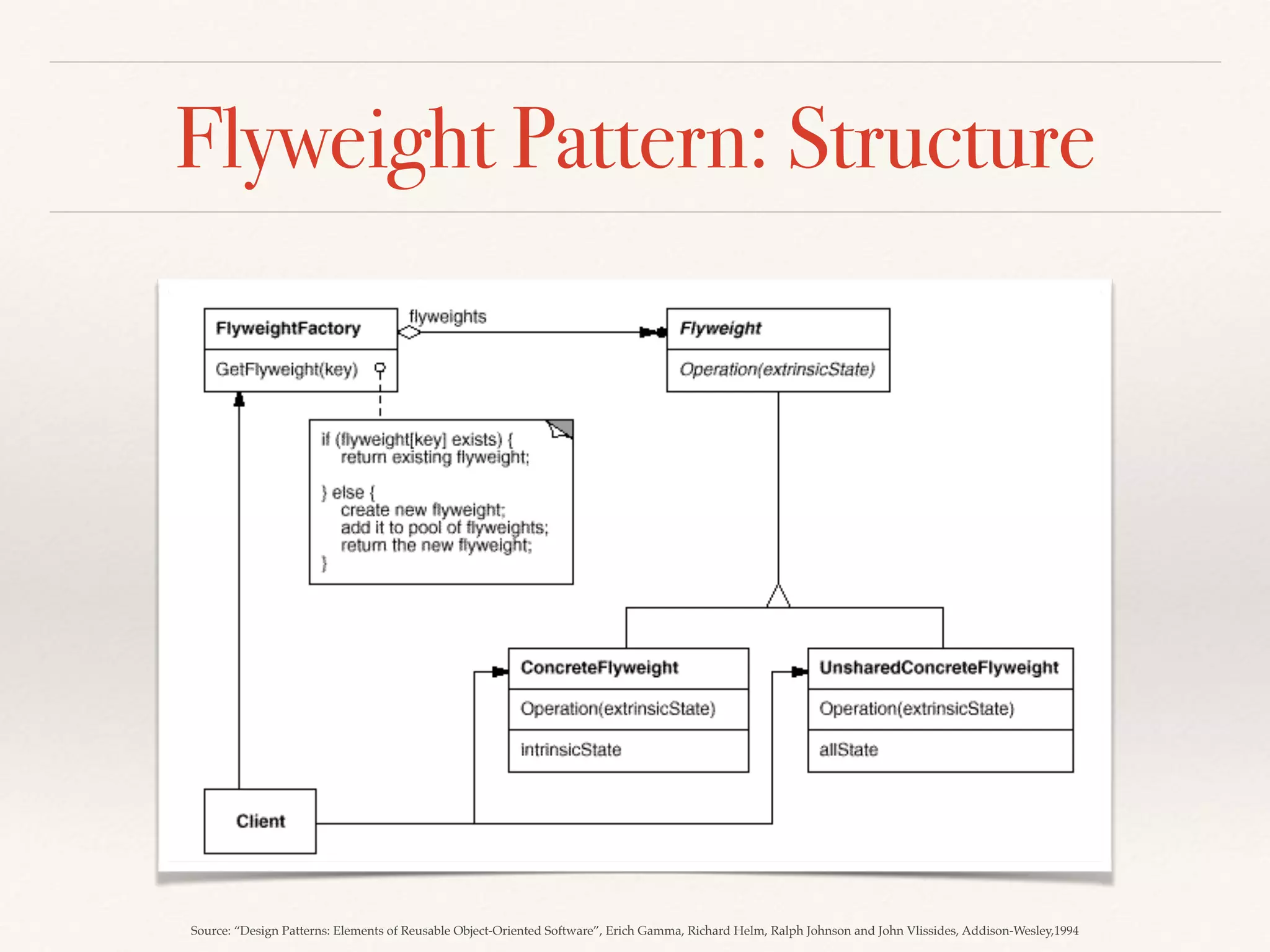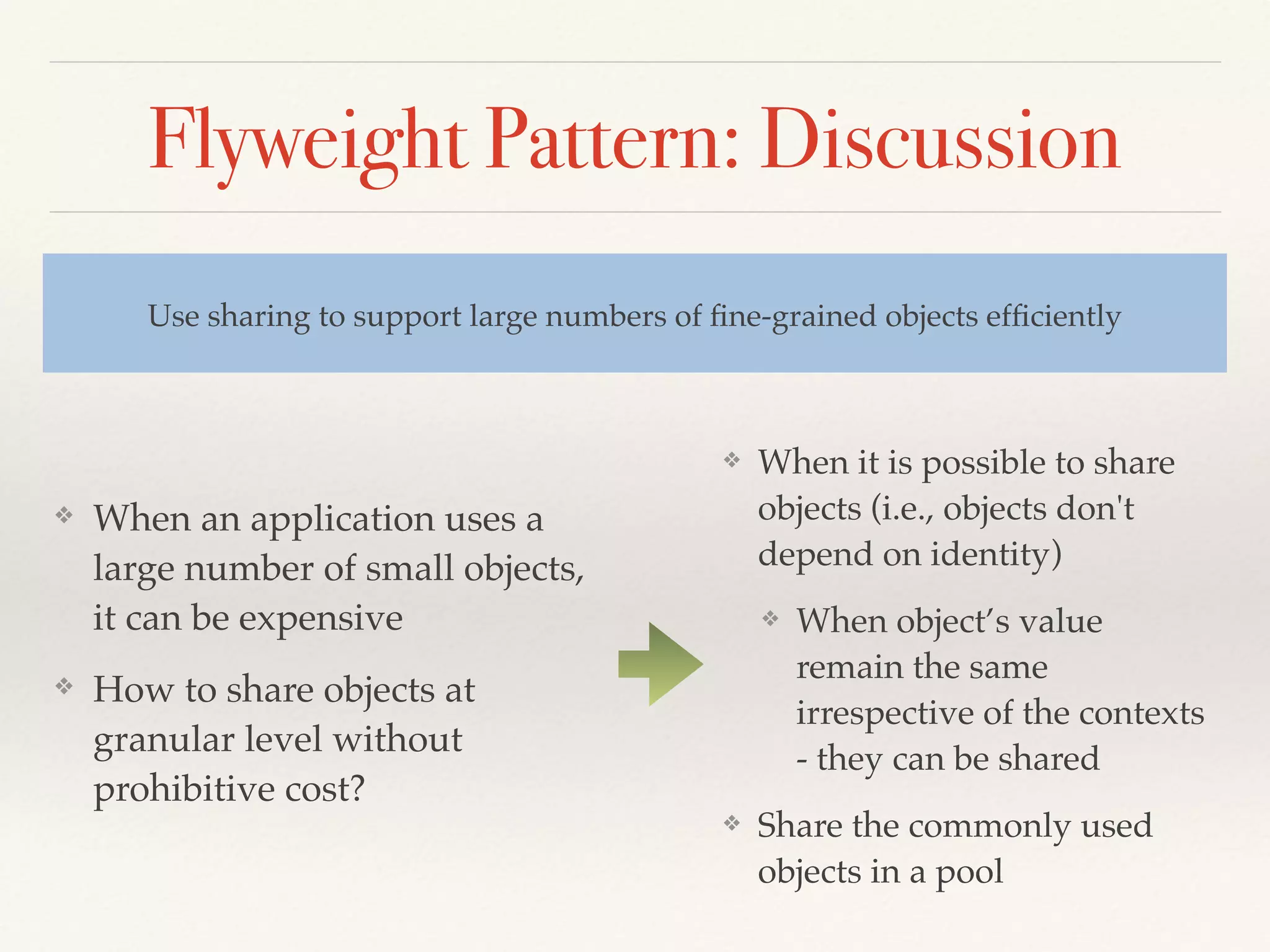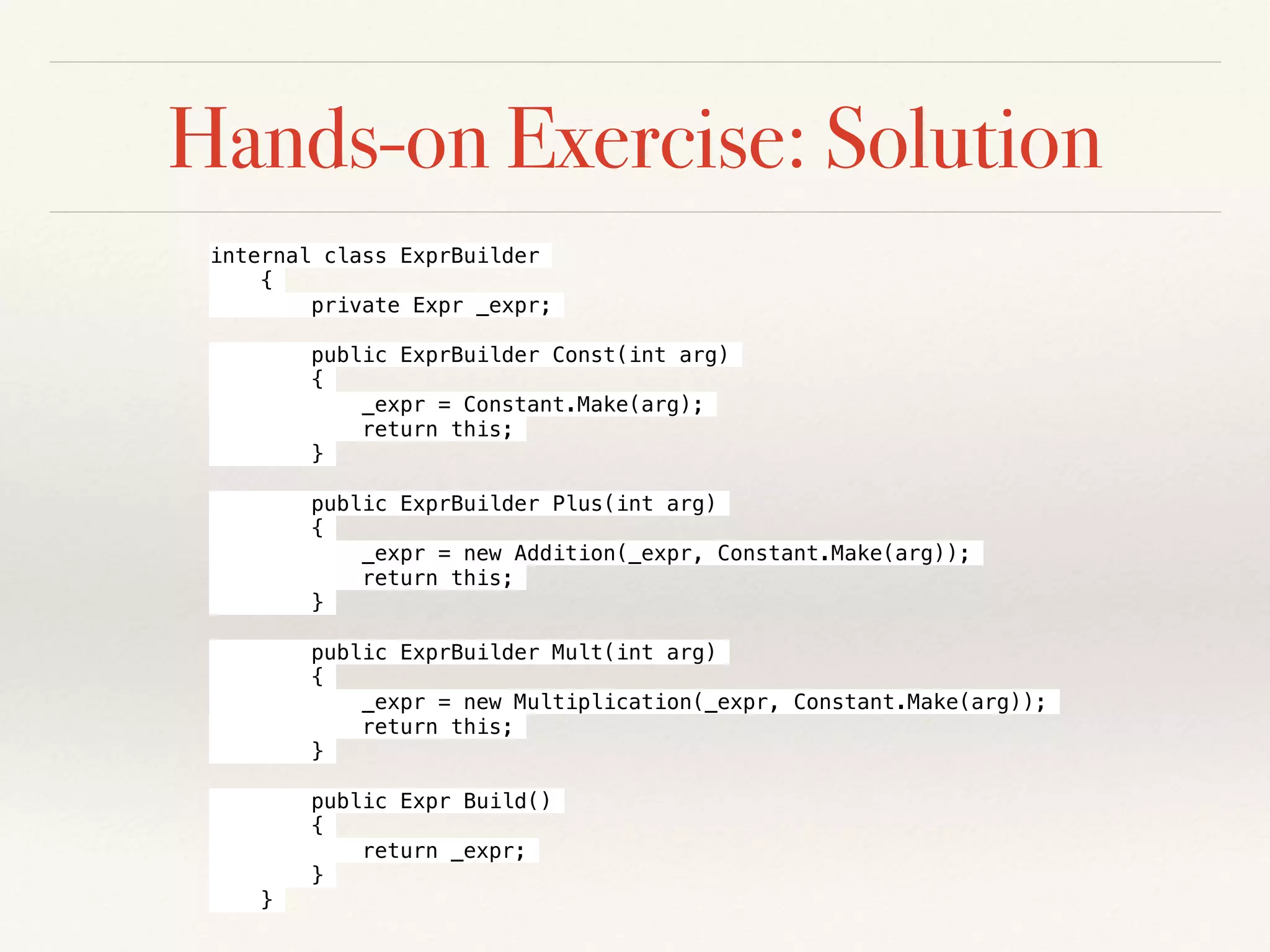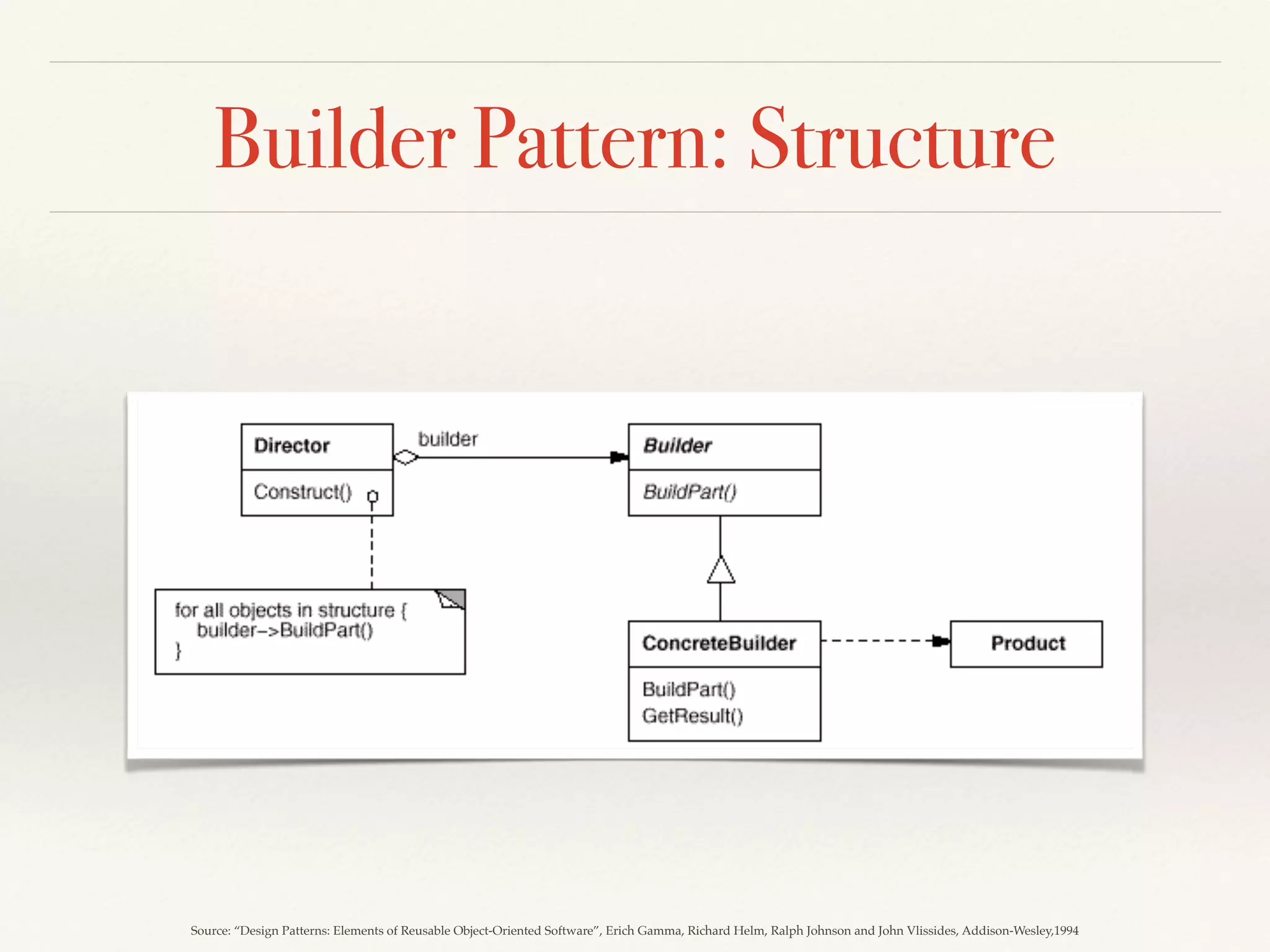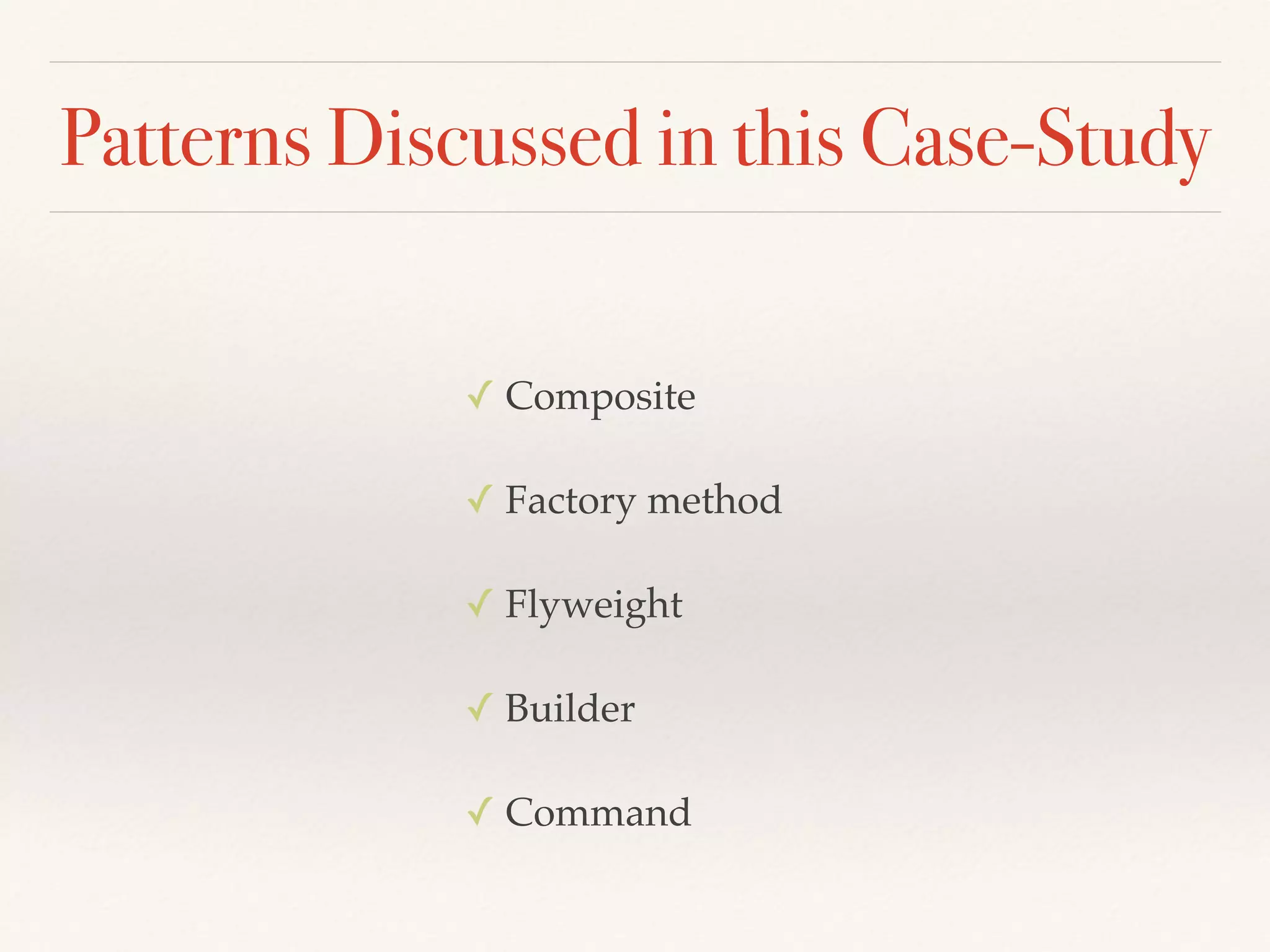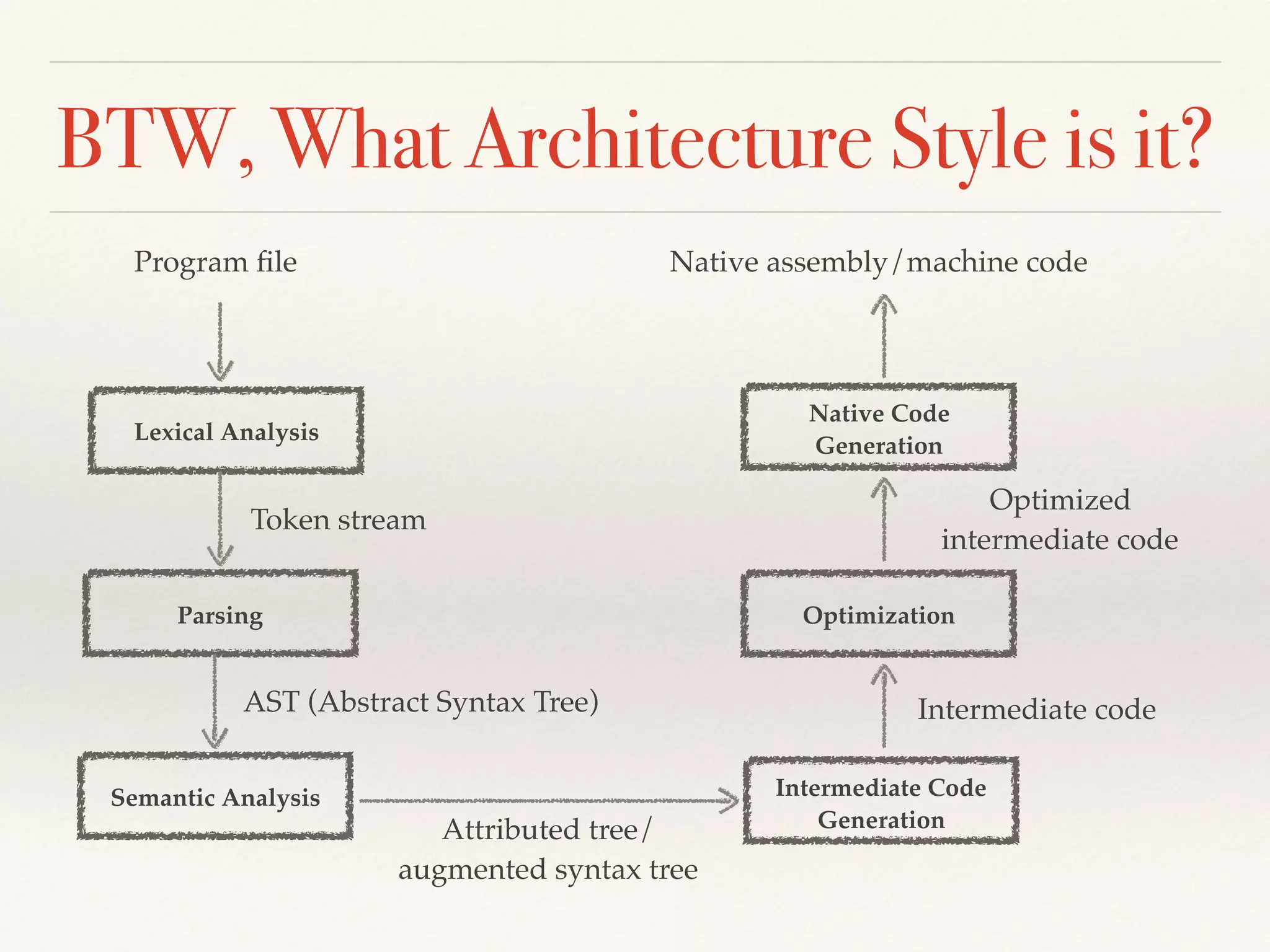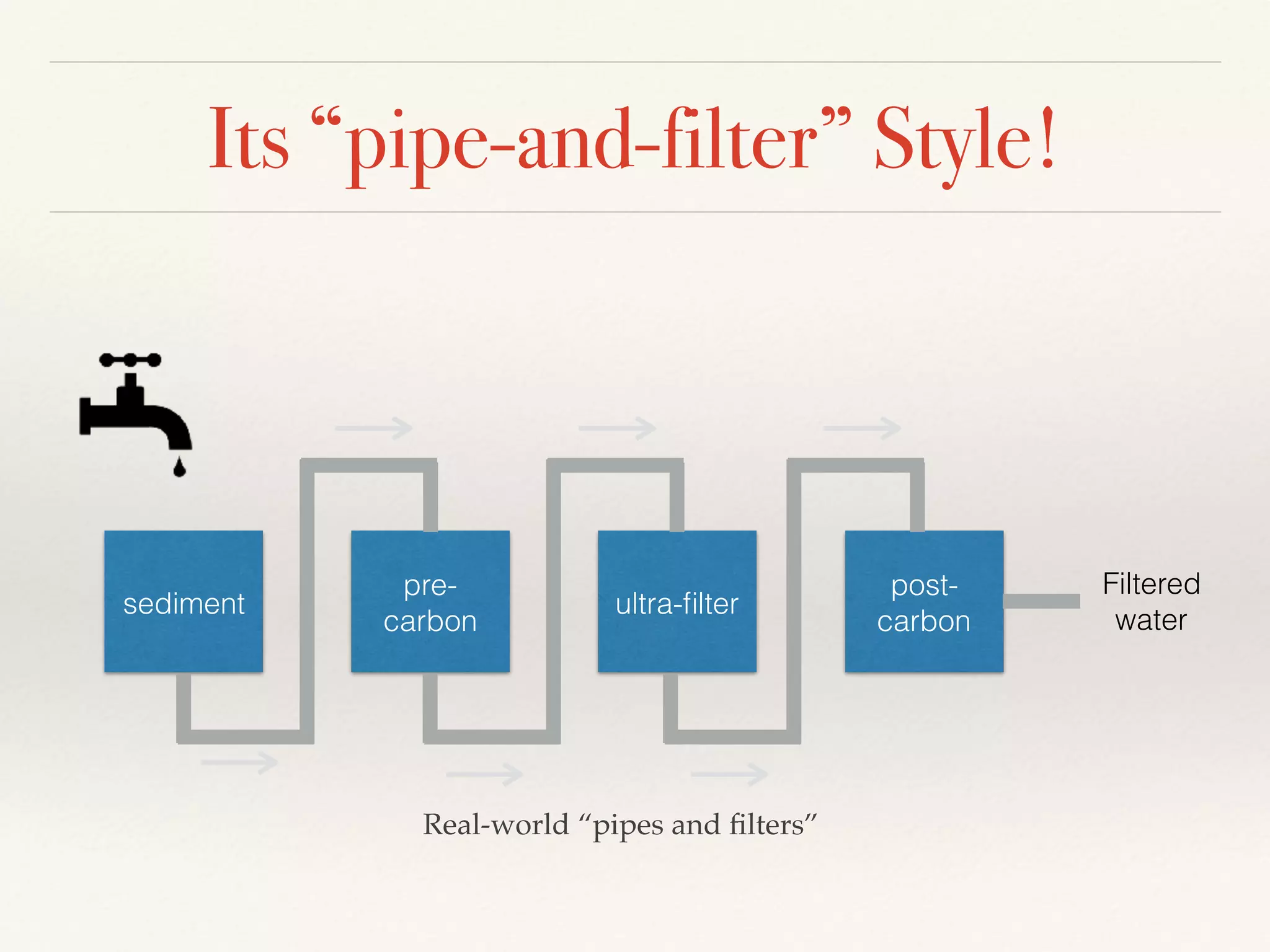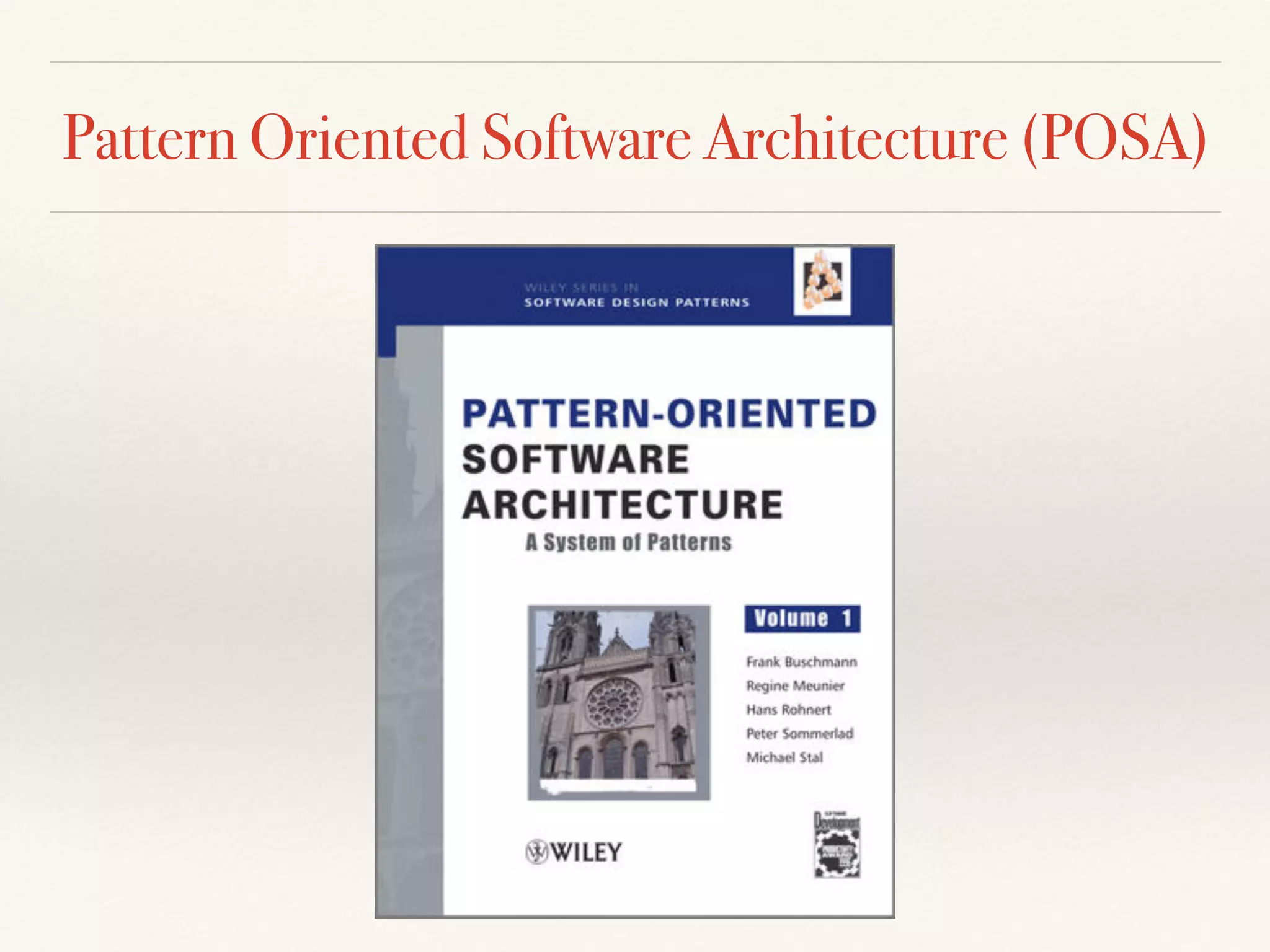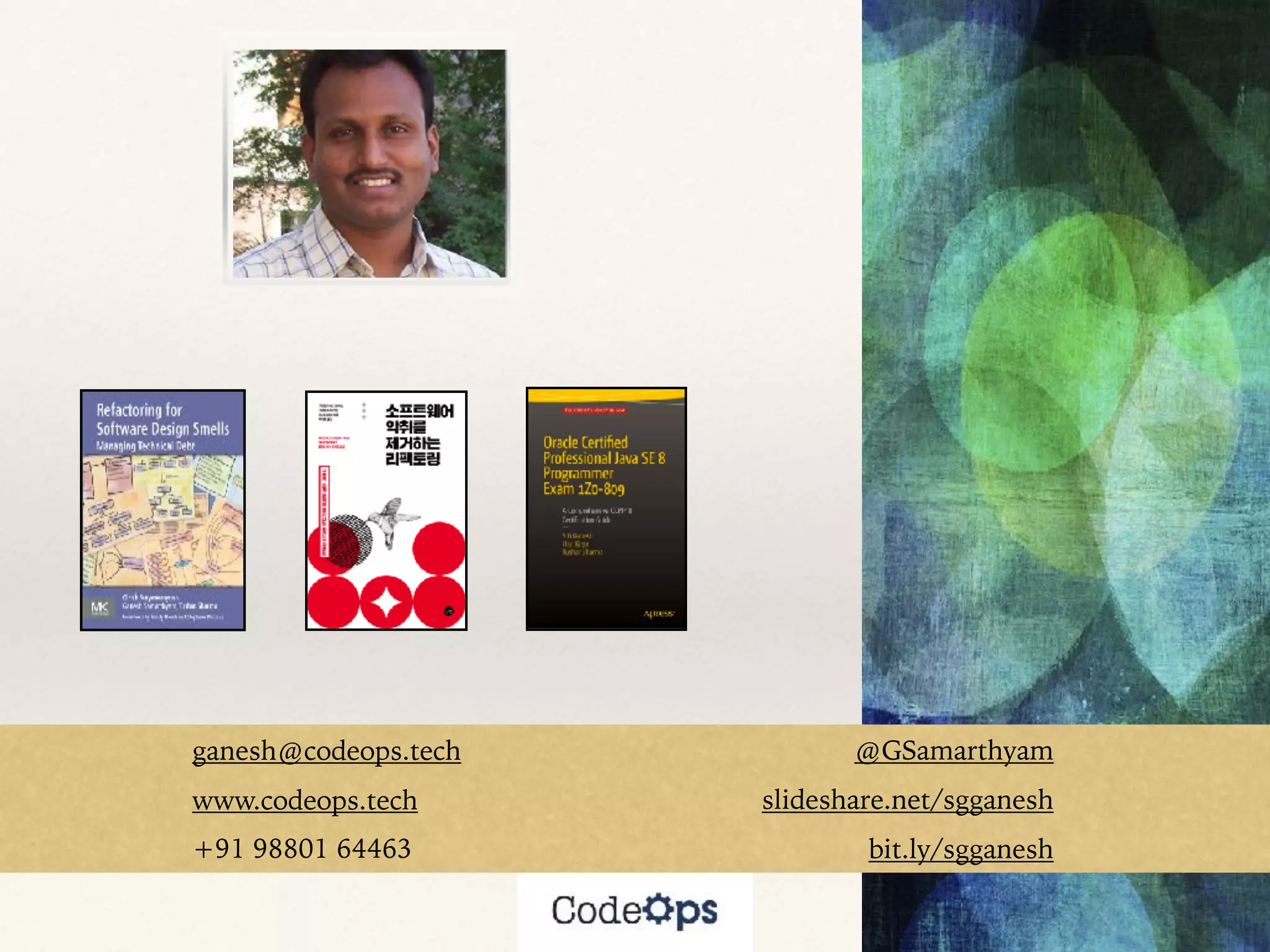The document presents a case study on refactoring smelly code segments in an interpreter using design patterns like Command, Composite, Factory Method, Flyweight, and Builder. It includes code snippets illustrating essential object-oriented concepts such as runtime polymorphism and provides hands-on exercises for designing interpreters. The architecture style discussed is the pipe-and-filter, relevant for intermediate code generation and code optimization.
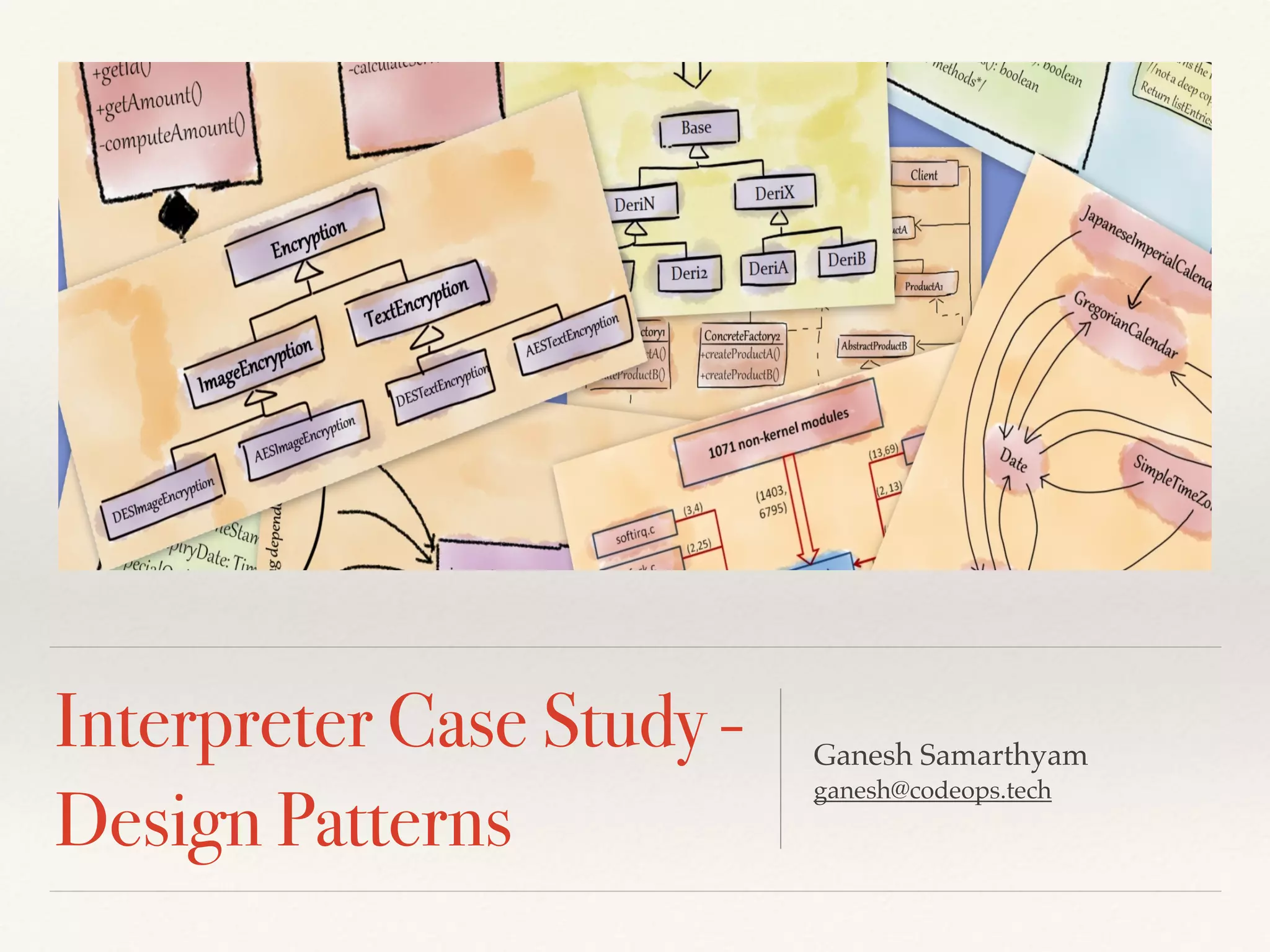
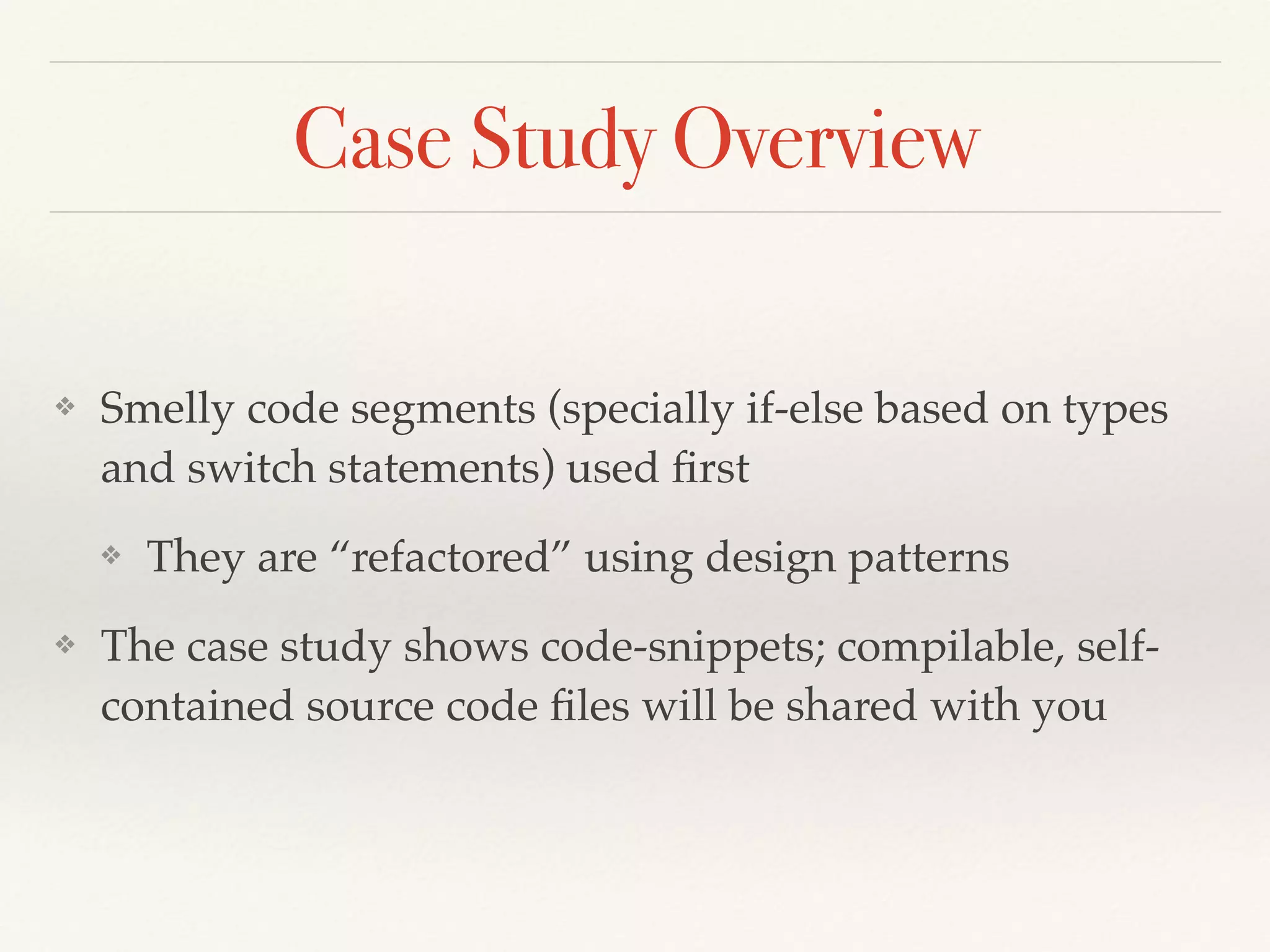
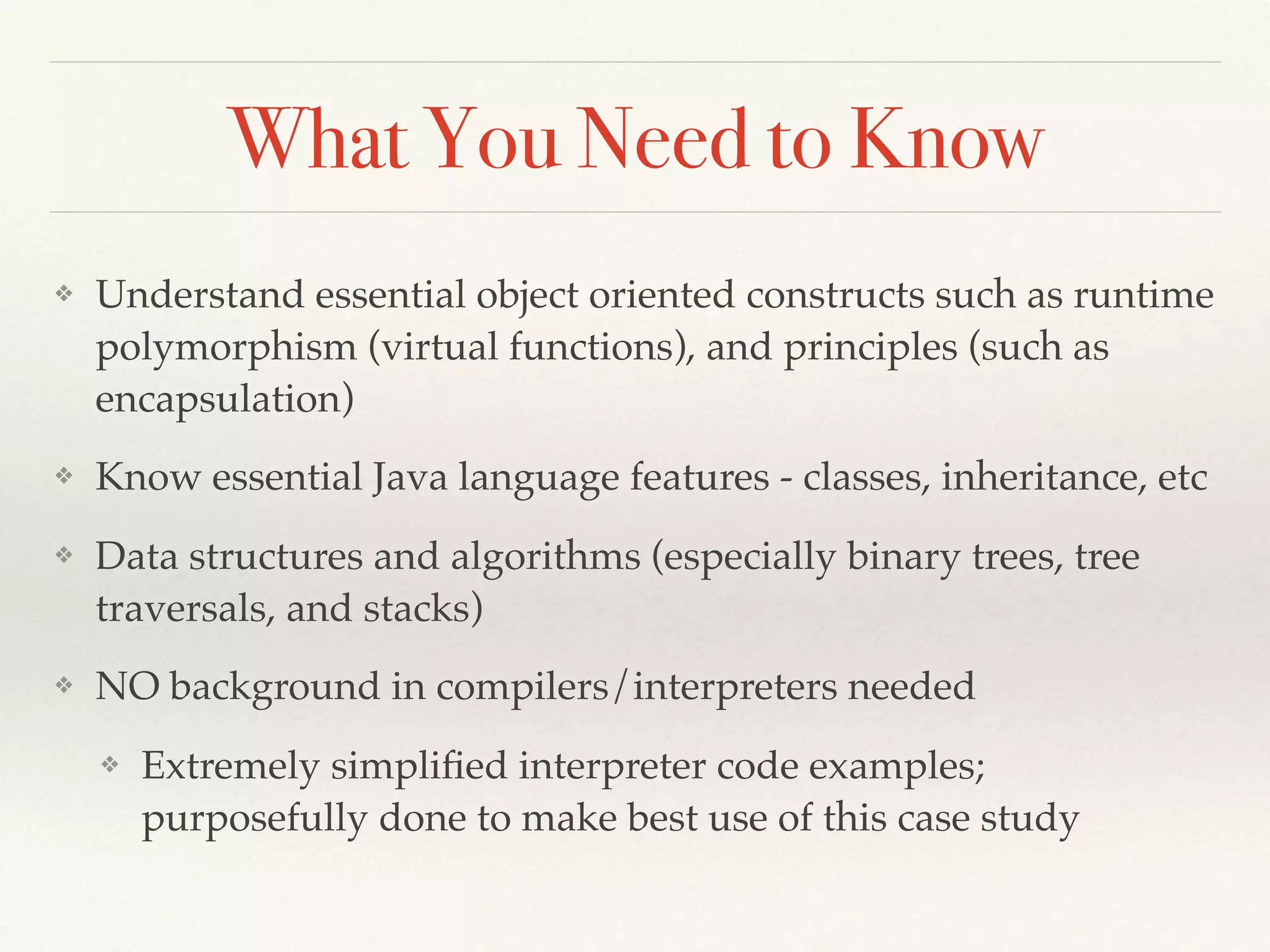
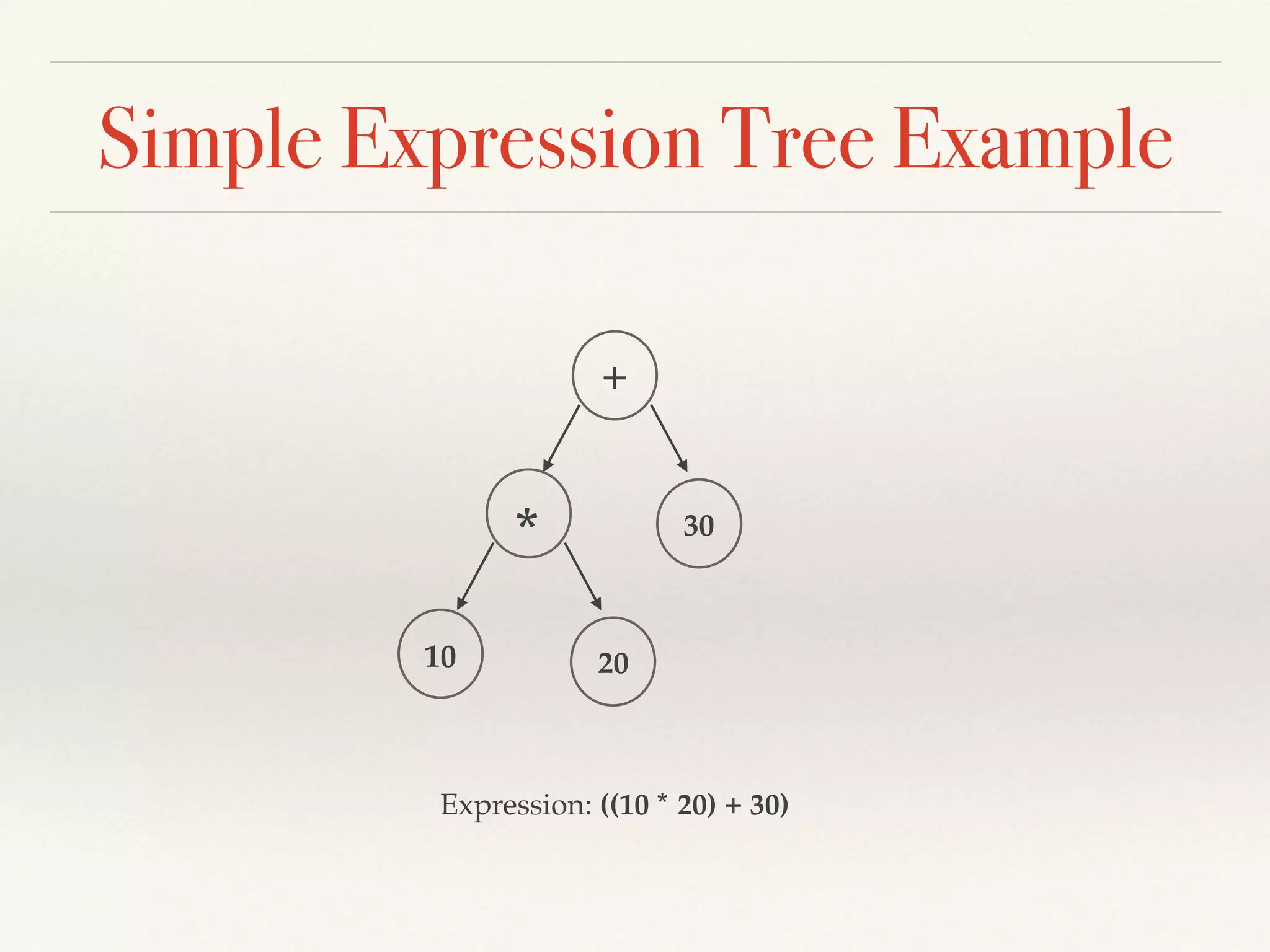

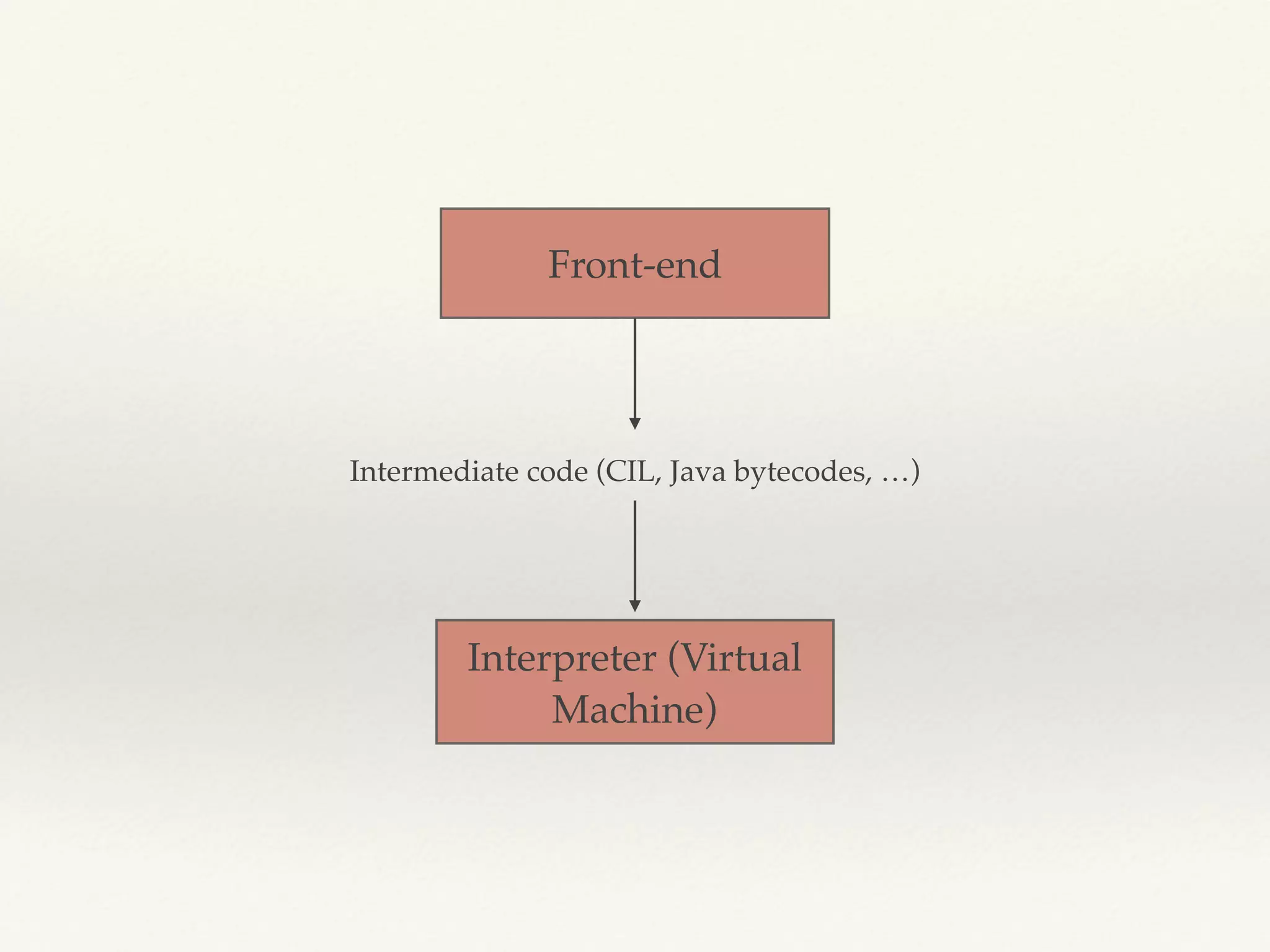
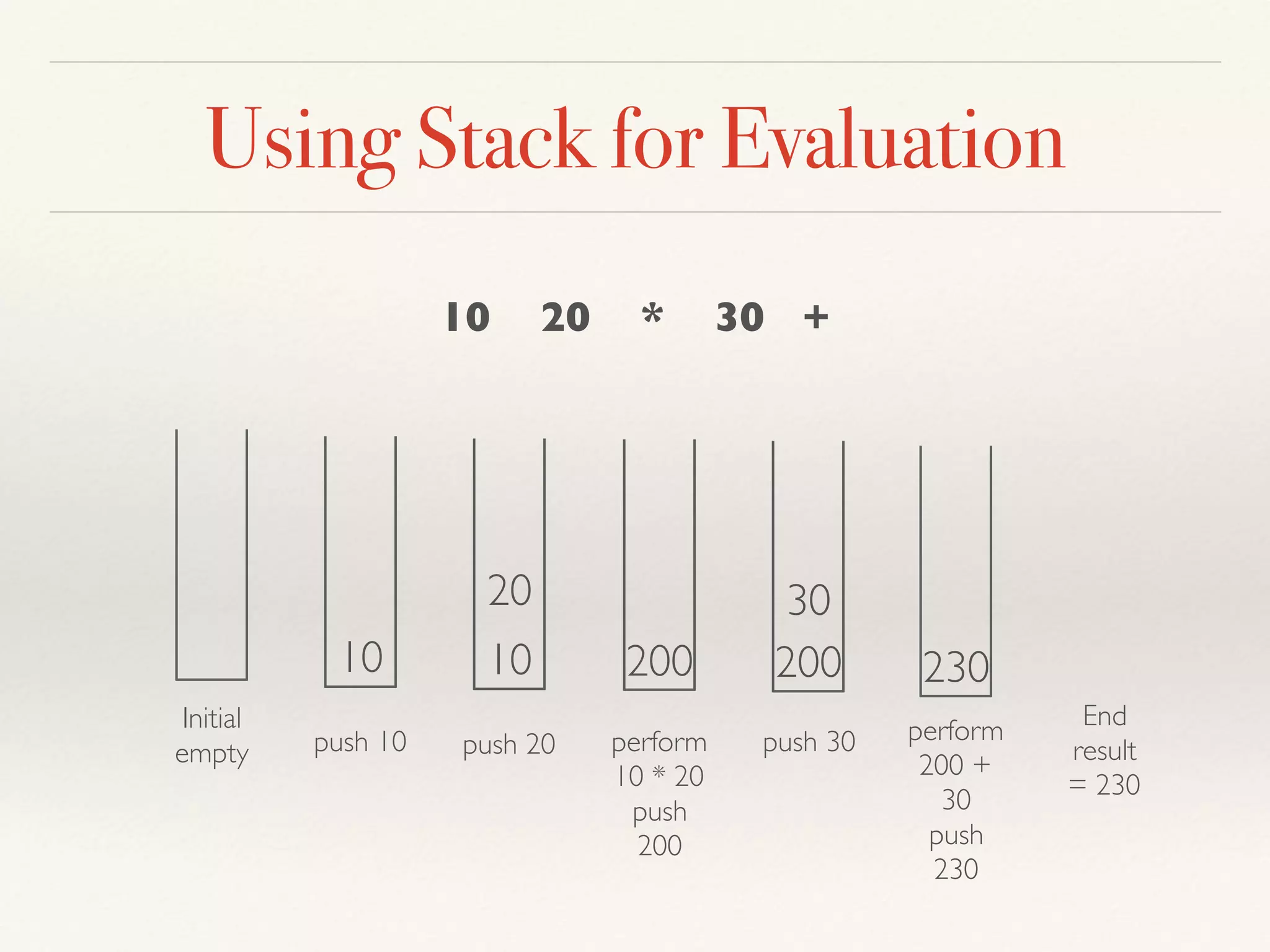
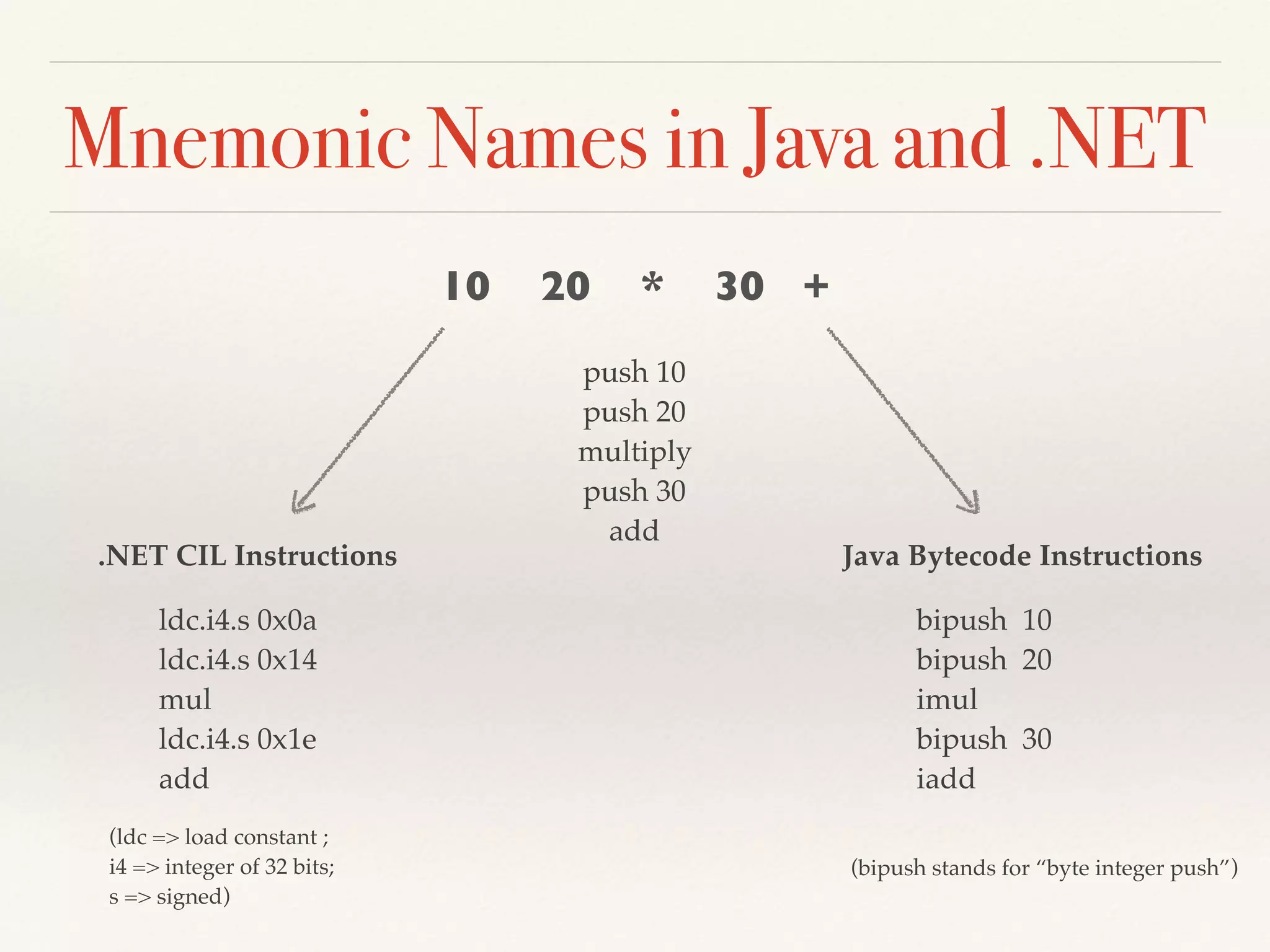
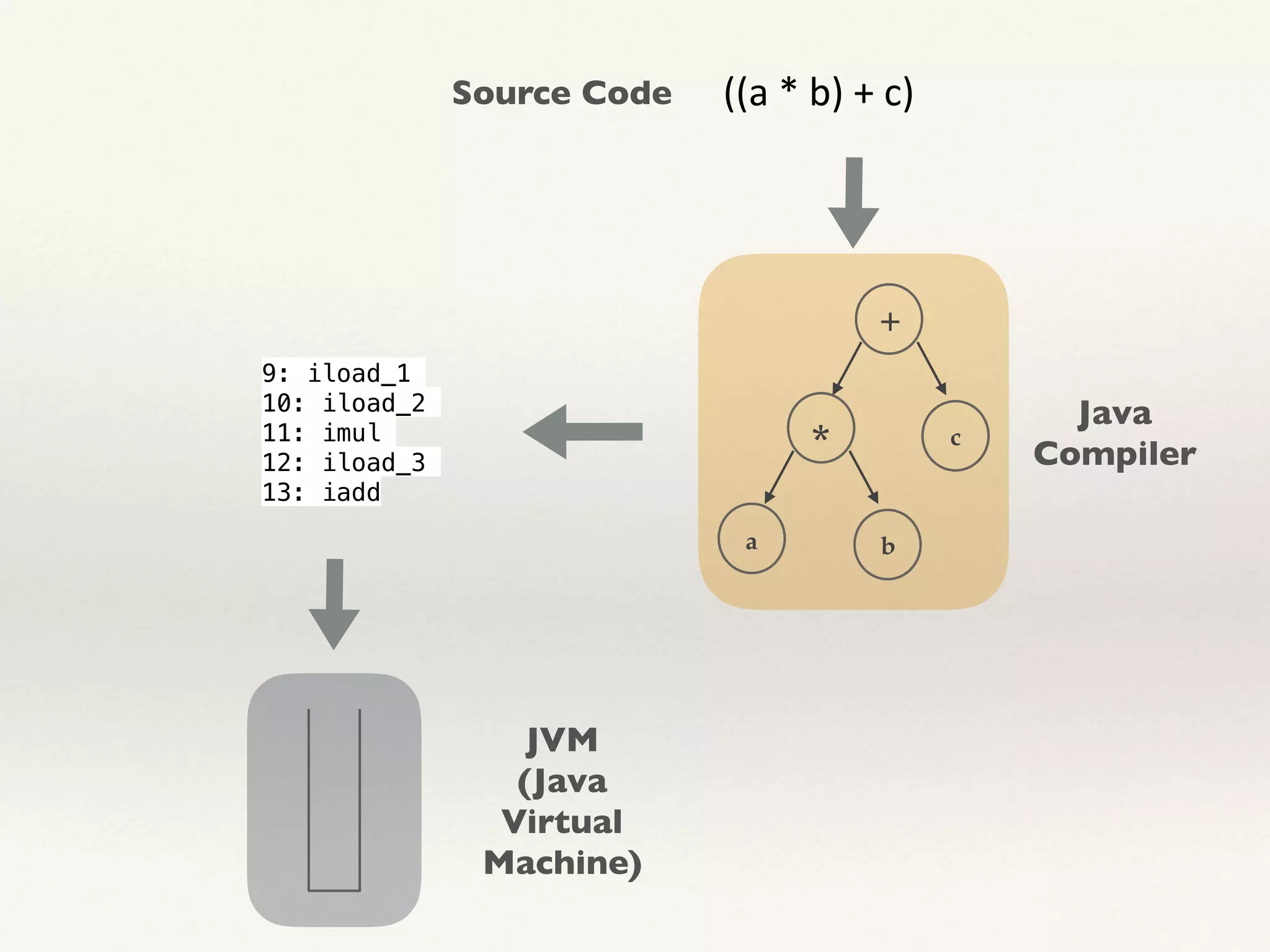
![Procedural (conditional) Code
How to get rid of
conditional statements?
internal class Interpreter
{
private static readonly Stack<int> ExecutionStack = new Stack<int>();
private static int Interpret(byte[] byteCodes)
{
var pc = 0;
while (pc < byteCodes.Length)
switch (byteCodes[pc++])
{
case (byte) BYTECODE.ADD:
ExecutionStack.Push(ExecutionStack.Pop() + ExecutionStack.Pop());
break;
case (byte) BYTECODE.LDCI4S:
ExecutionStack.Push(byteCodes[pc++]);
break;
}
return ExecutionStack.Pop();
}
// rest of the code elided ...
}](https://image.slidesharecdn.com/interpretercasestudy-designpatterns-170604050055/75/Interpreter-Case-Study-Design-Patterns-10-2048.jpg)
![Hands-on Exercise
Refactor this code to remove the switch statements and
use runtime polymorphism instead
switch (byteCodes[pc++])
{
case (byte) BYTECODE.ADD:
ExecutionStack.Push(ExecutionStack.Pop() + ExecutionStack.Pop());
break;
case (byte) BYTECODE.LDCI4S:
ExecutionStack.Push(byteCodes[pc++]);
break;
}](https://image.slidesharecdn.com/interpretercasestudy-designpatterns-170604050055/75/Interpreter-Case-Study-Design-Patterns-11-2048.jpg)
![Command Pattern: Solution
internal class Interpreter
{
private readonly Stack<int> _evalStack = new Stack<int>();
public int Interpret(ByteCode[] byteCodes)
{
foreach (var byteCode in byteCodes) byteCode.Exec(_evalStack);
return _evalStack.Pop();
}
}
internal abstract class ByteCode
{
public abstract void Exec(Stack<int> evalStack);
}
internal class ADD : ByteCode
{
public override void Exec(Stack<int> evalStack)
{
var lval = evalStack.Pop();
var rval = evalStack.Pop();
evalStack.Push(rval + lval);
}
}](https://image.slidesharecdn.com/interpretercasestudy-designpatterns-170604050055/75/Interpreter-Case-Study-Design-Patterns-12-2048.jpg)
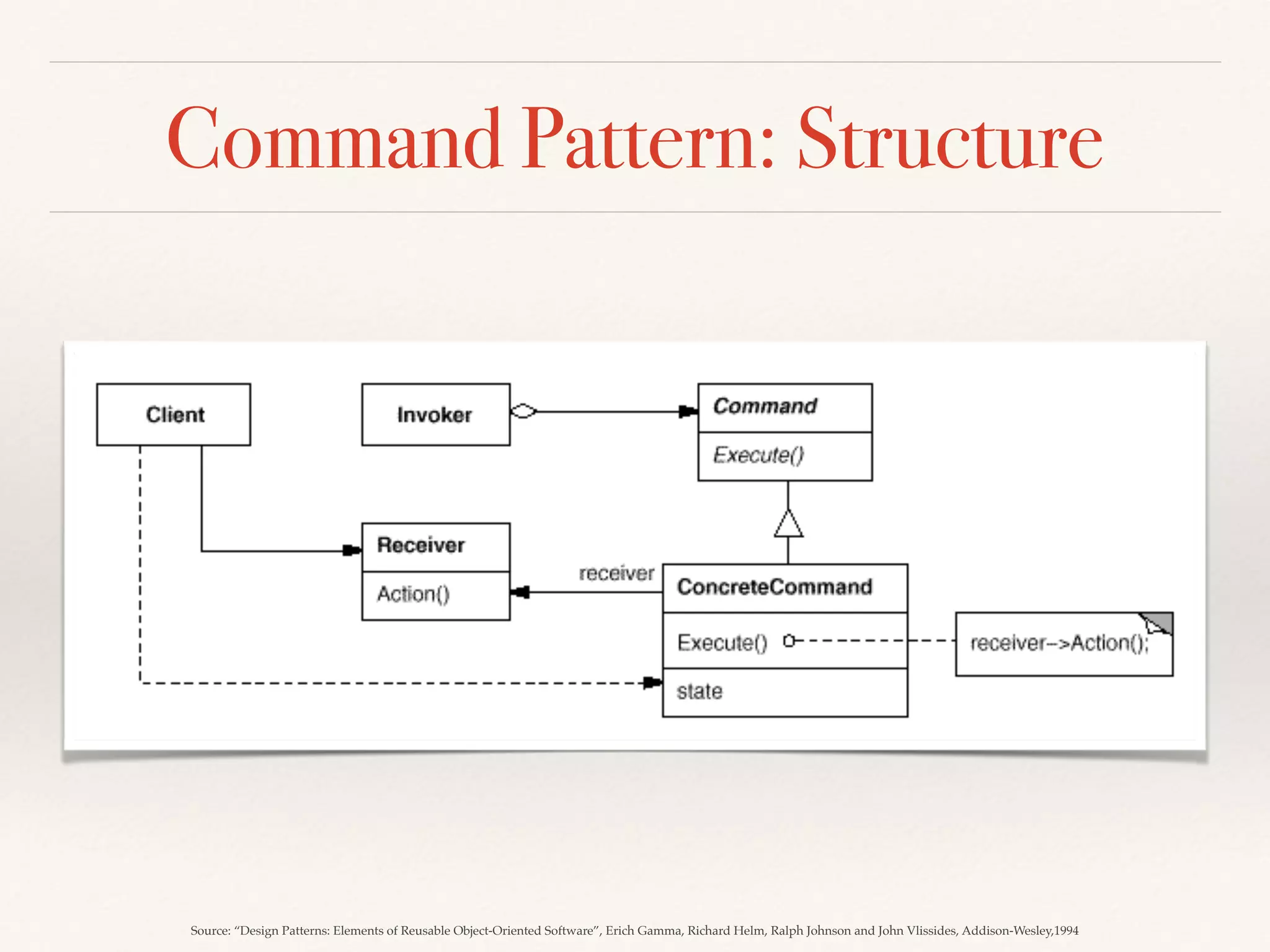
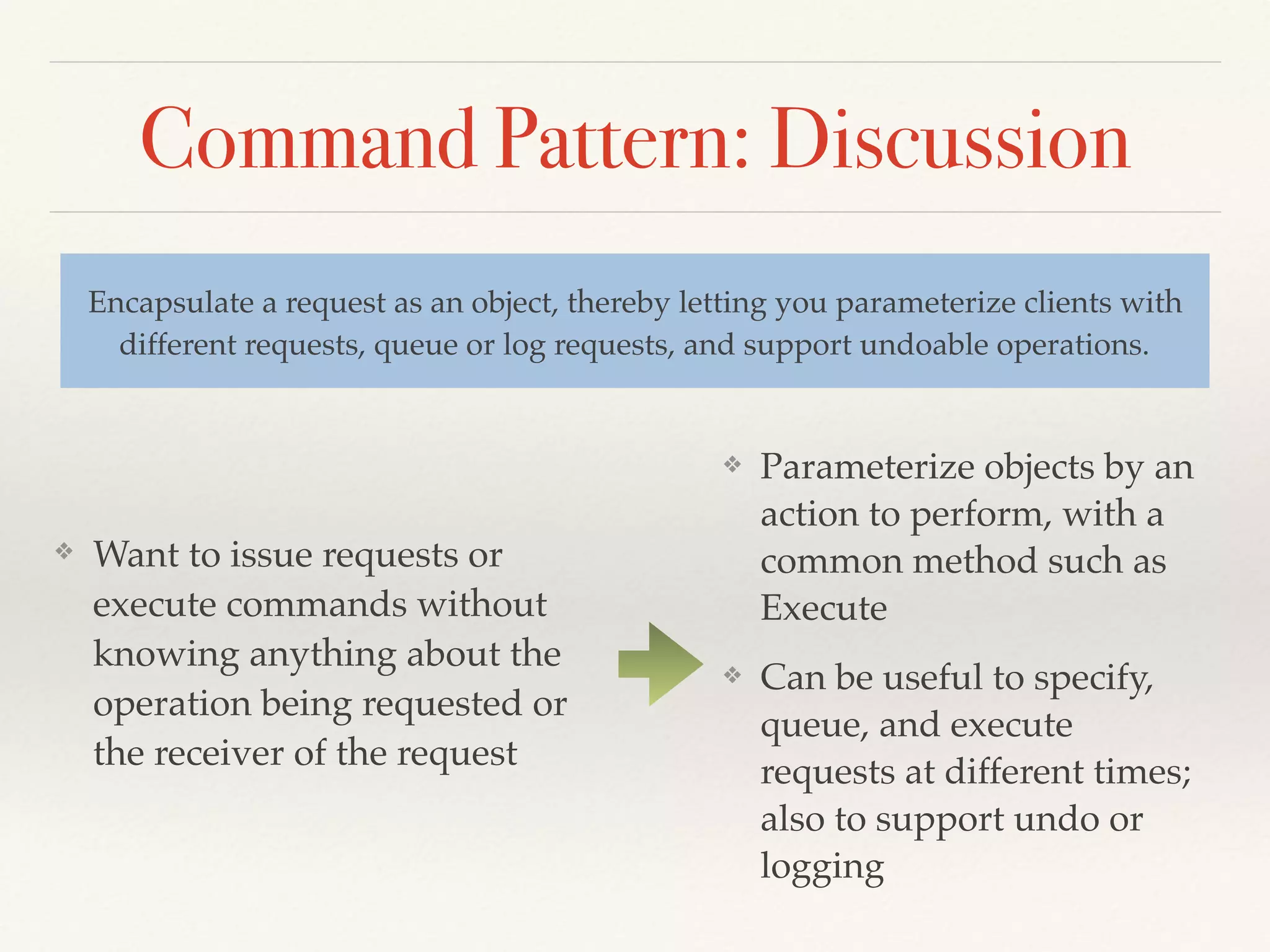
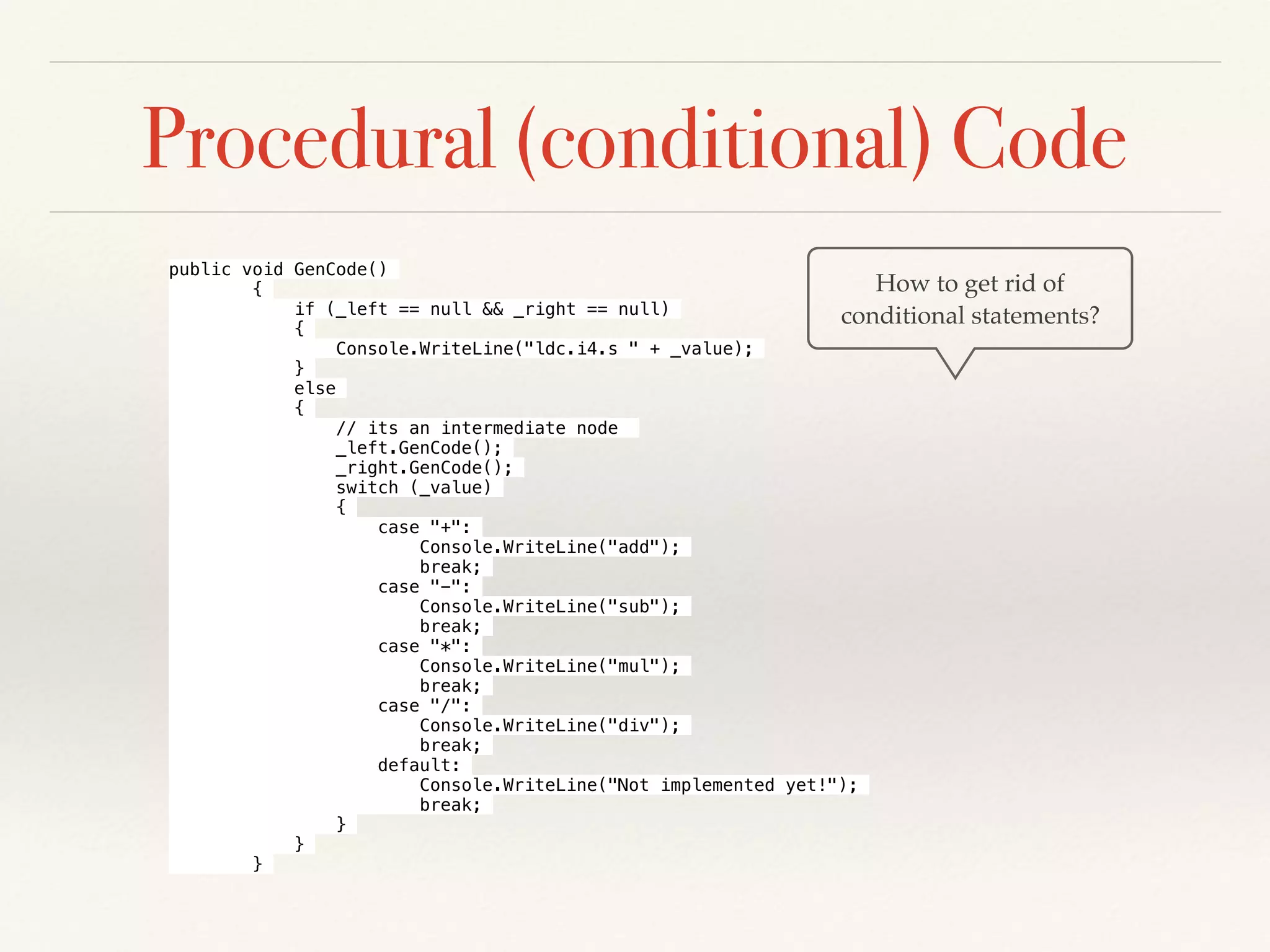
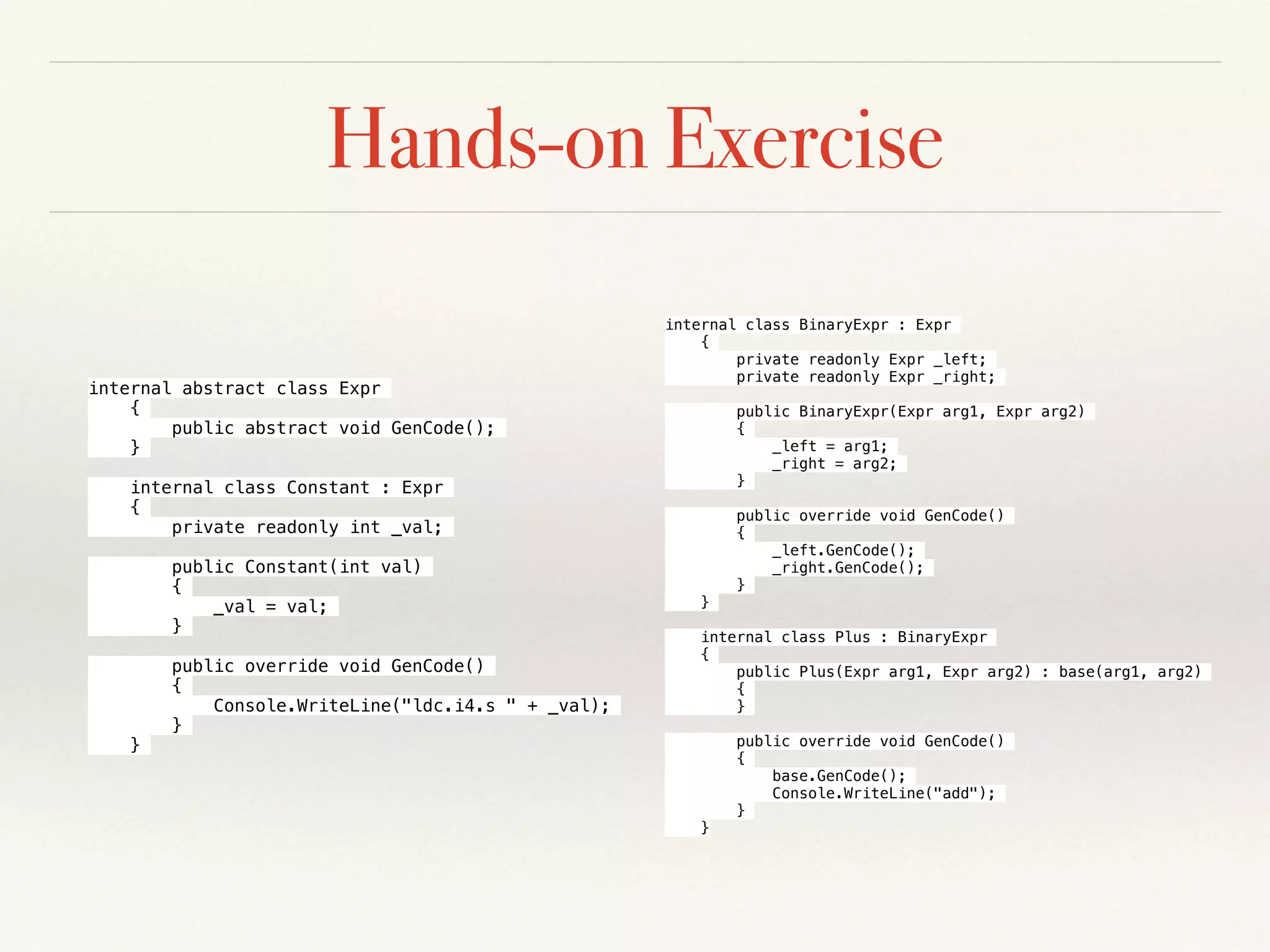
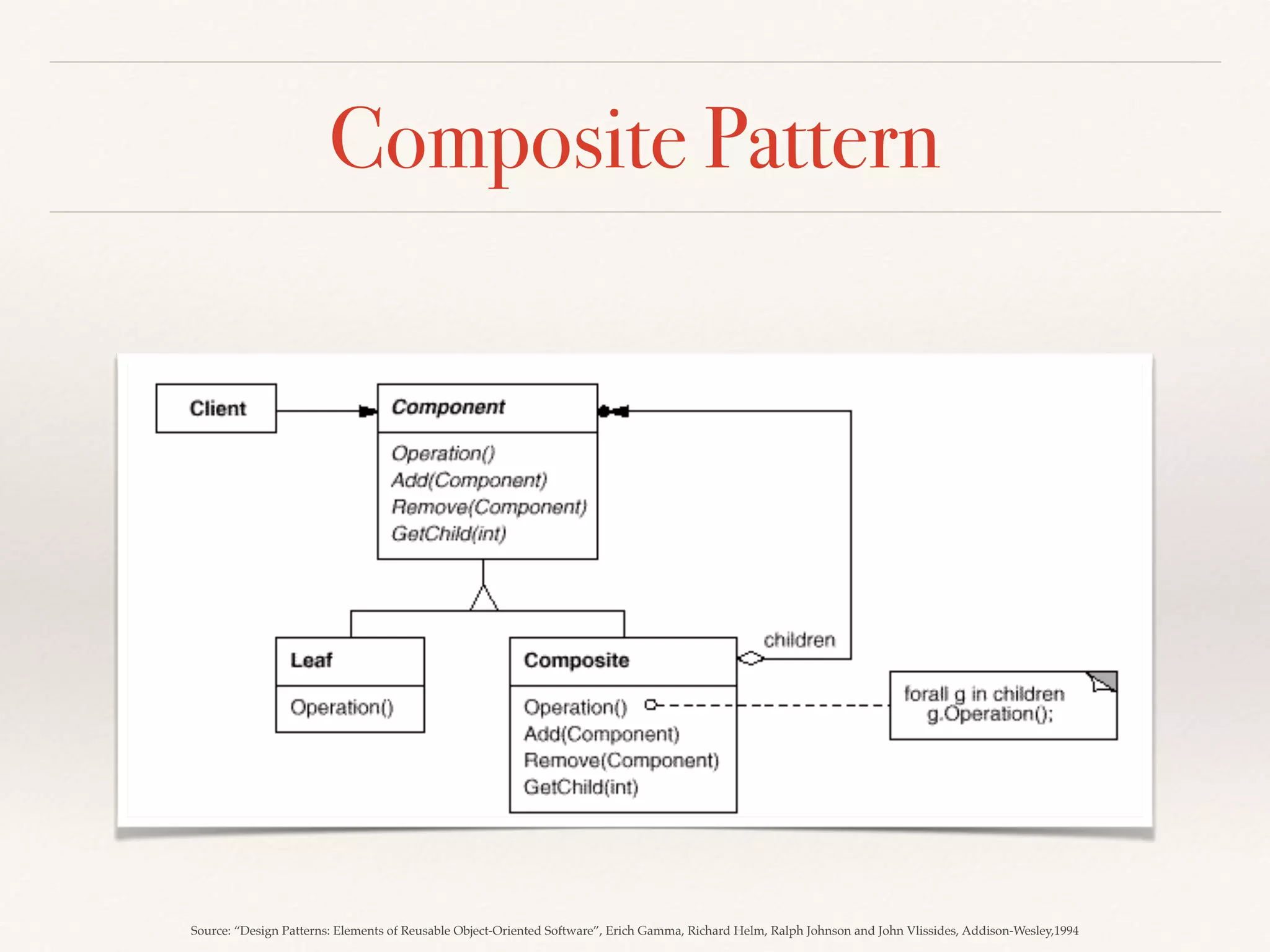

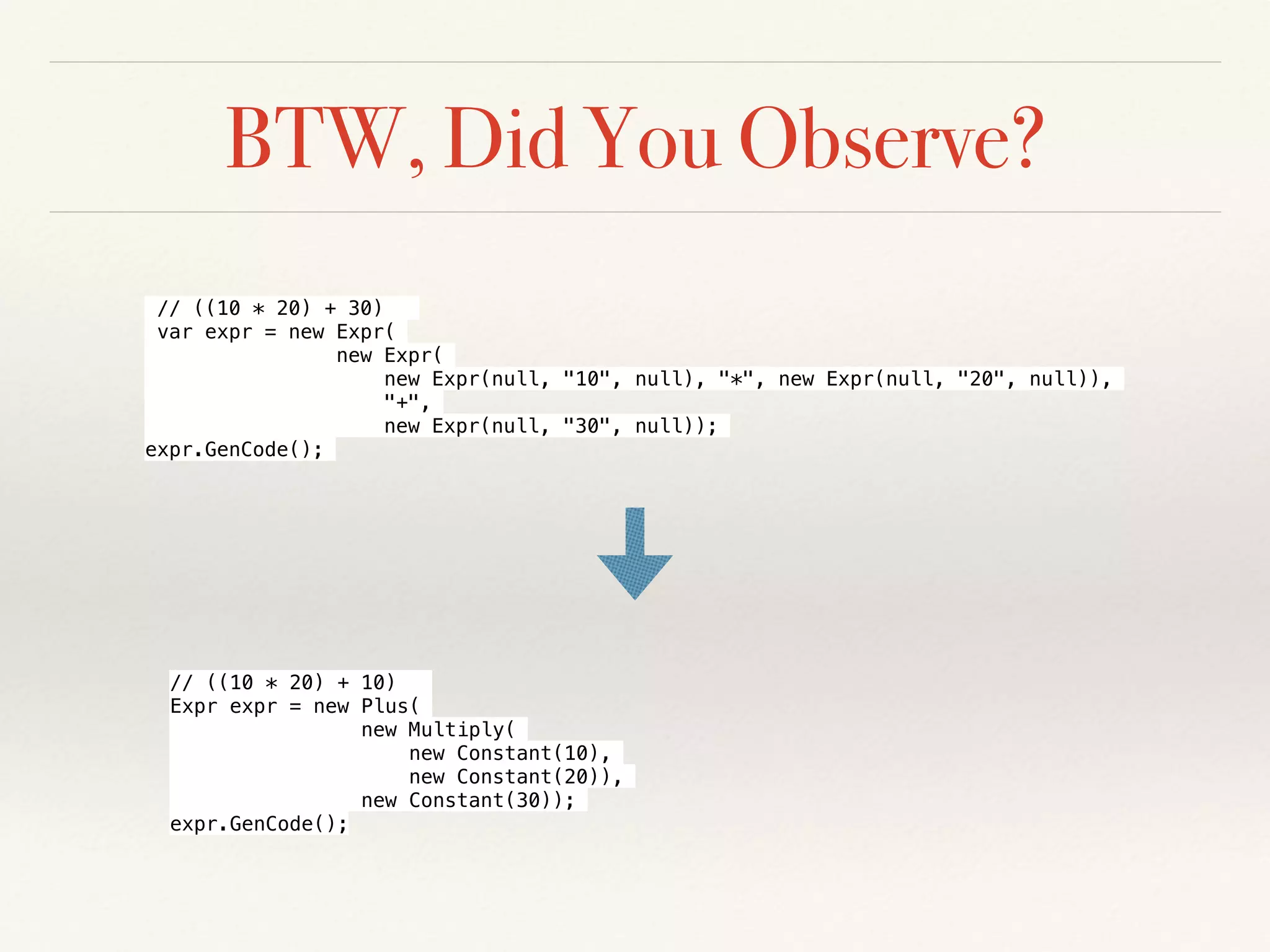
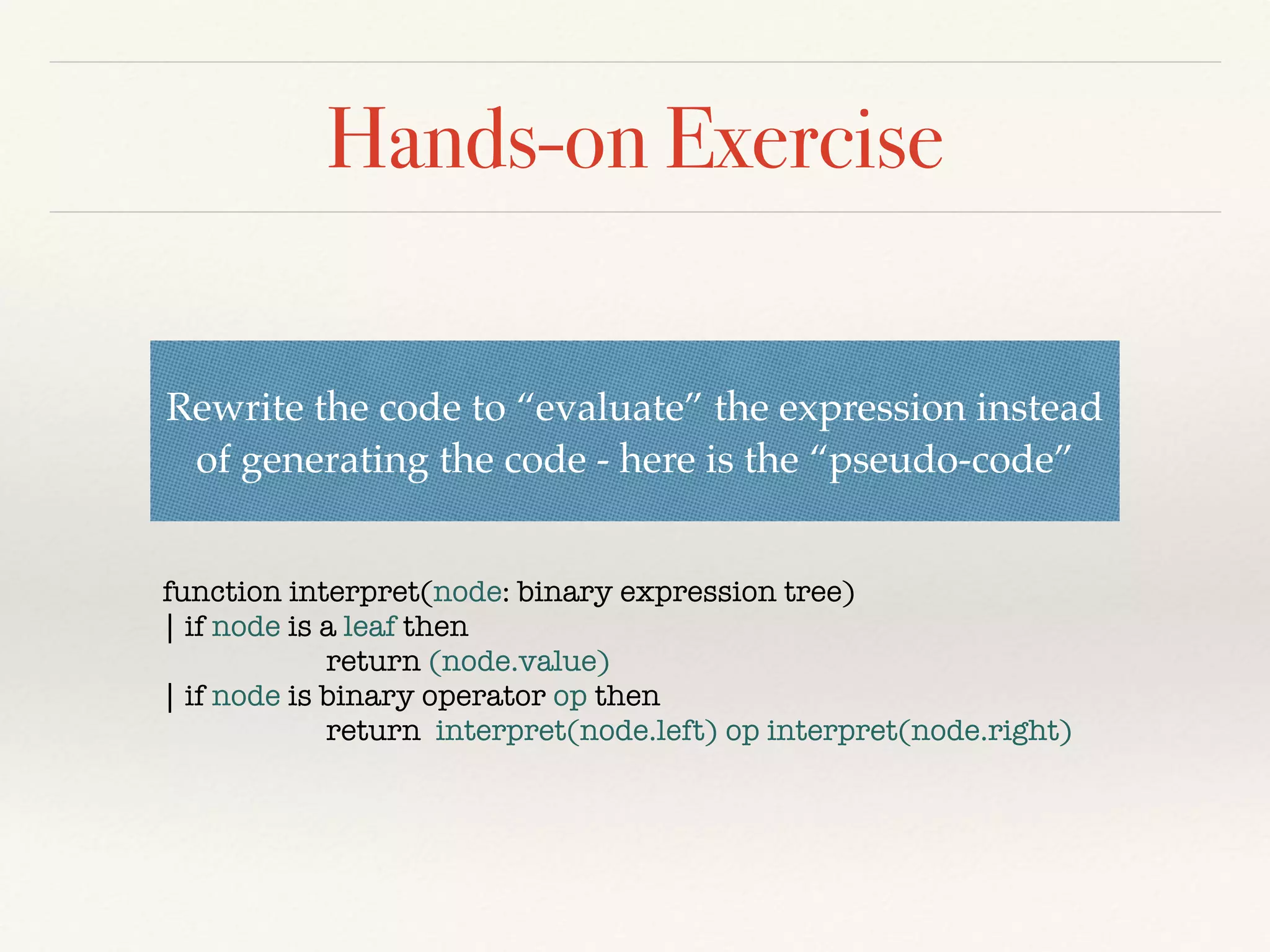
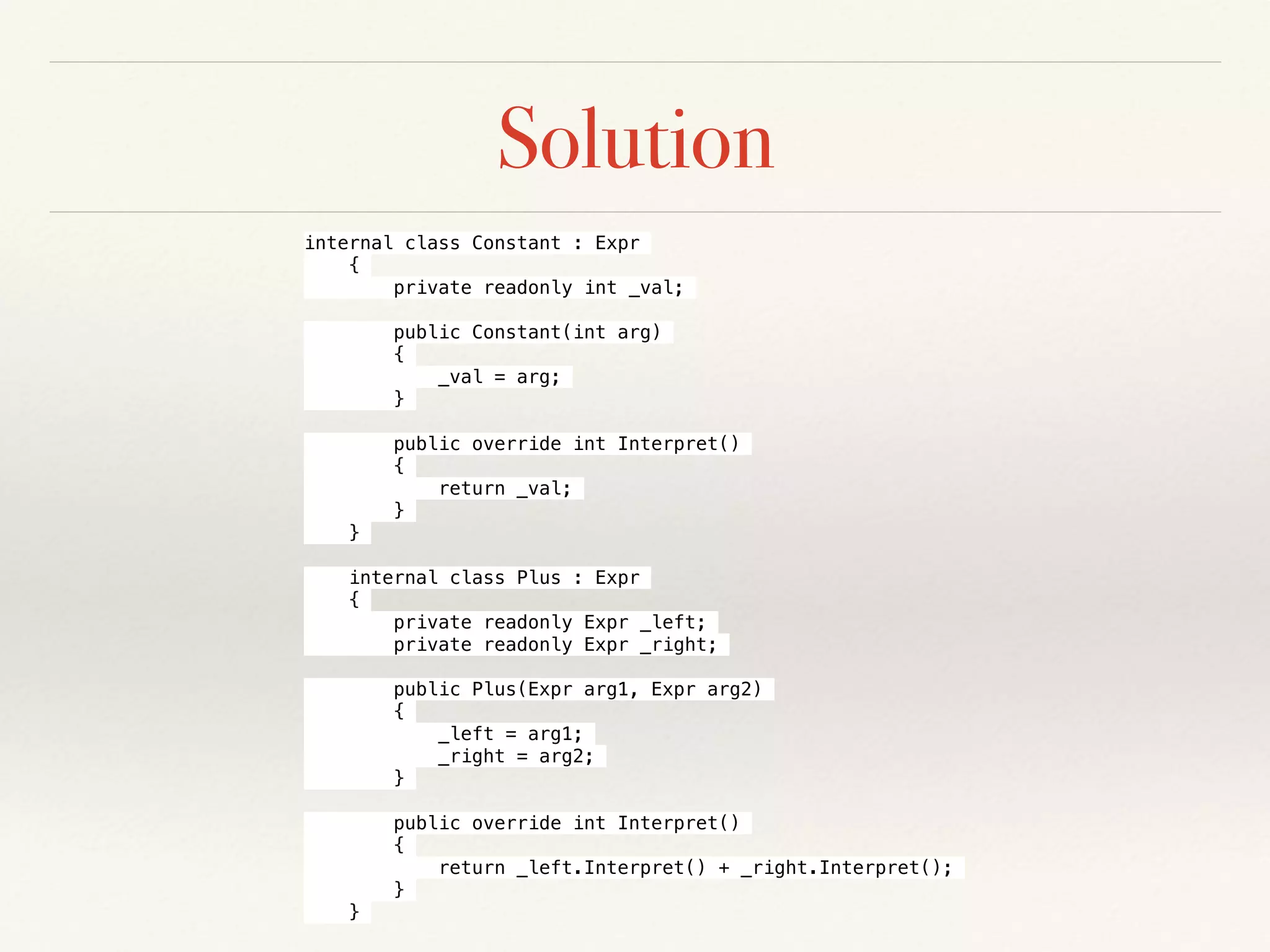
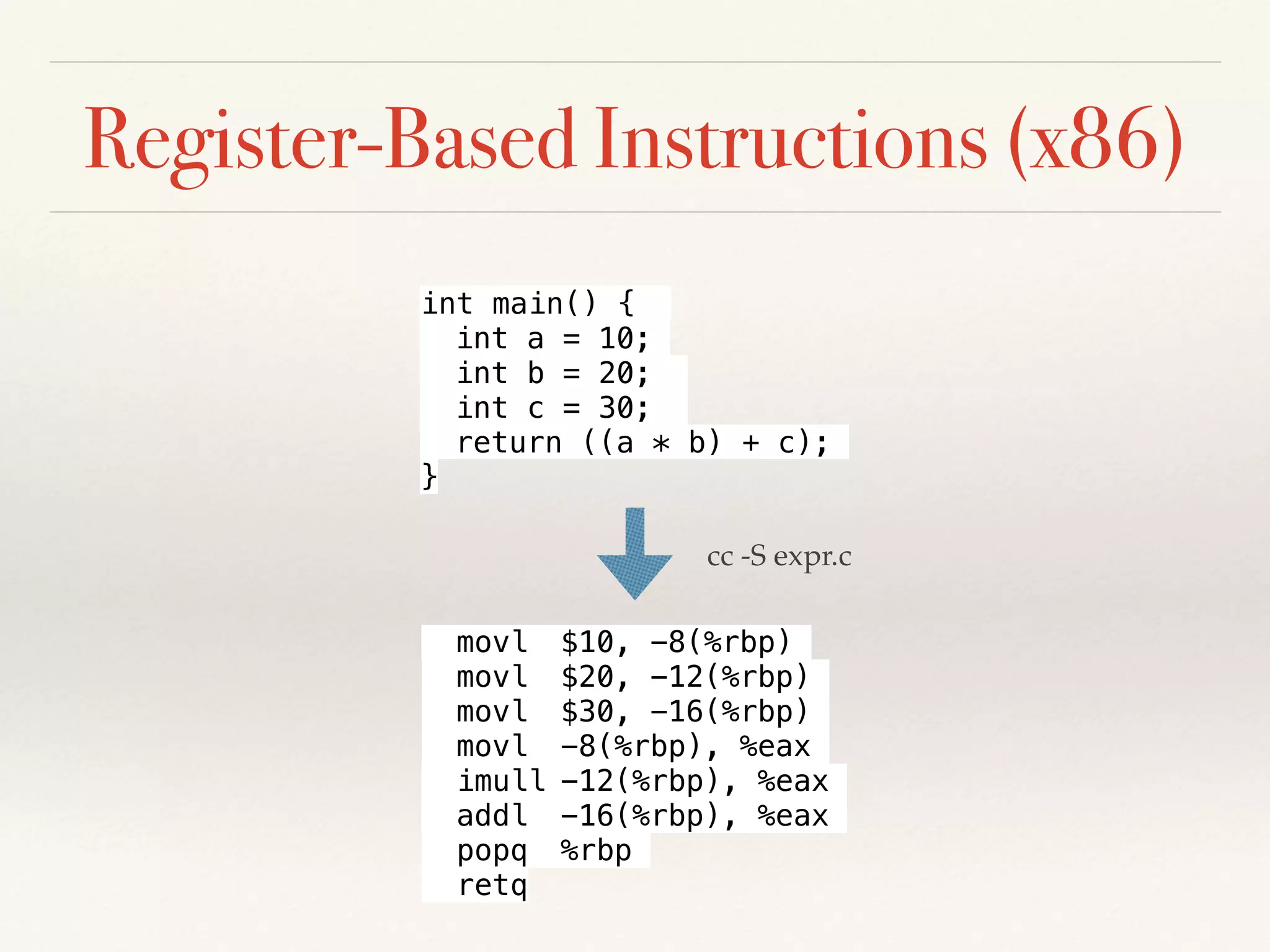
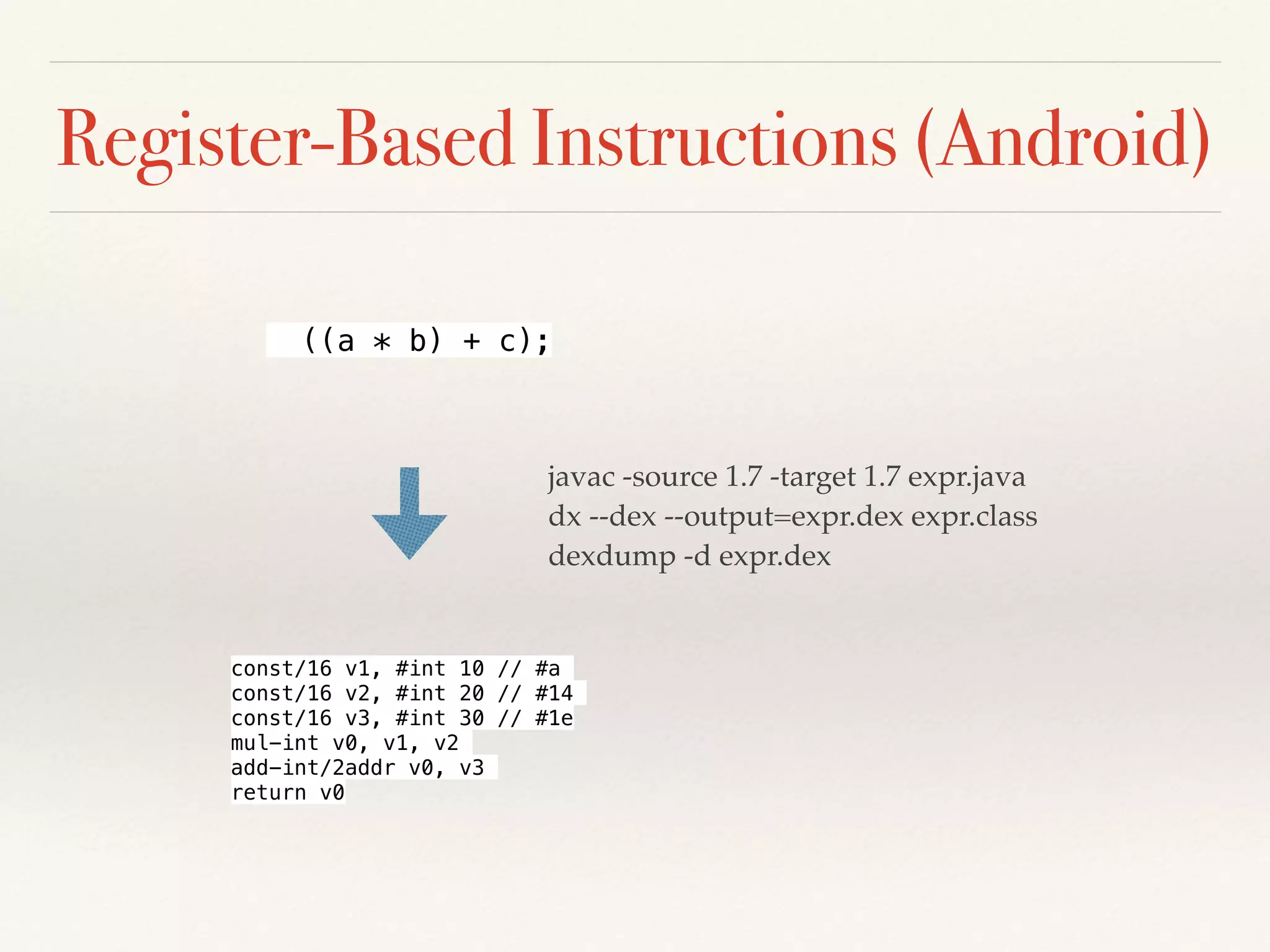

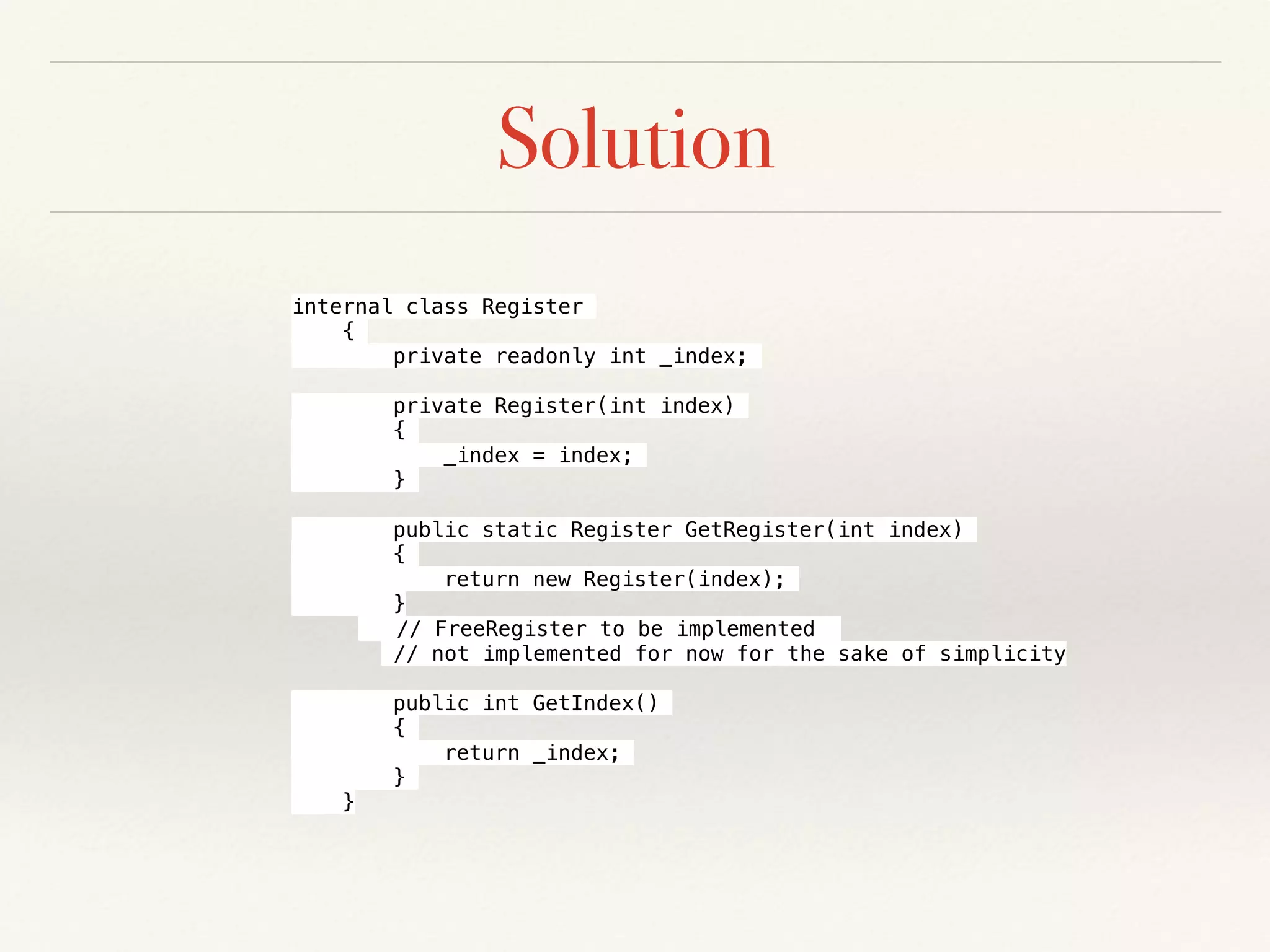
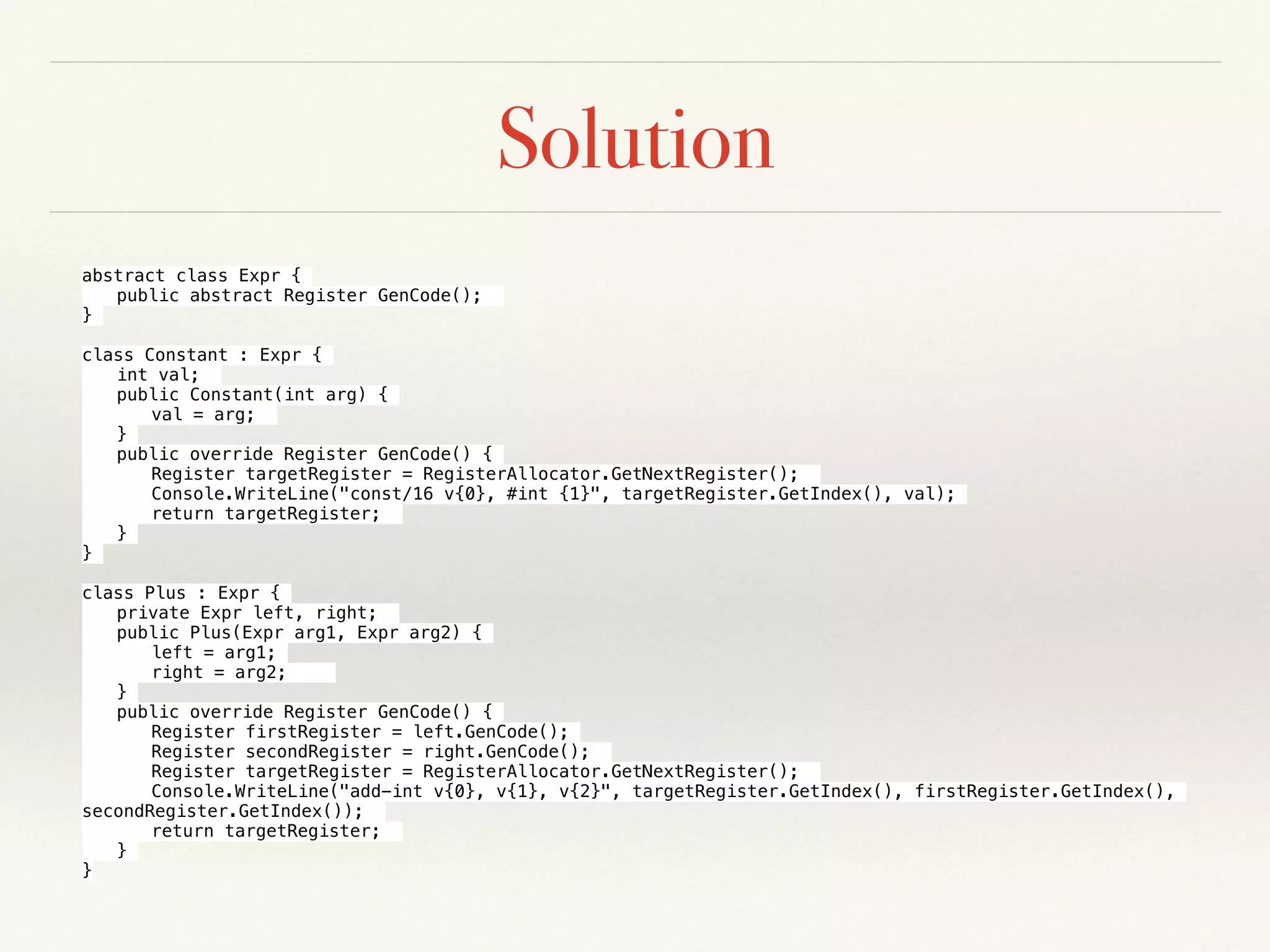
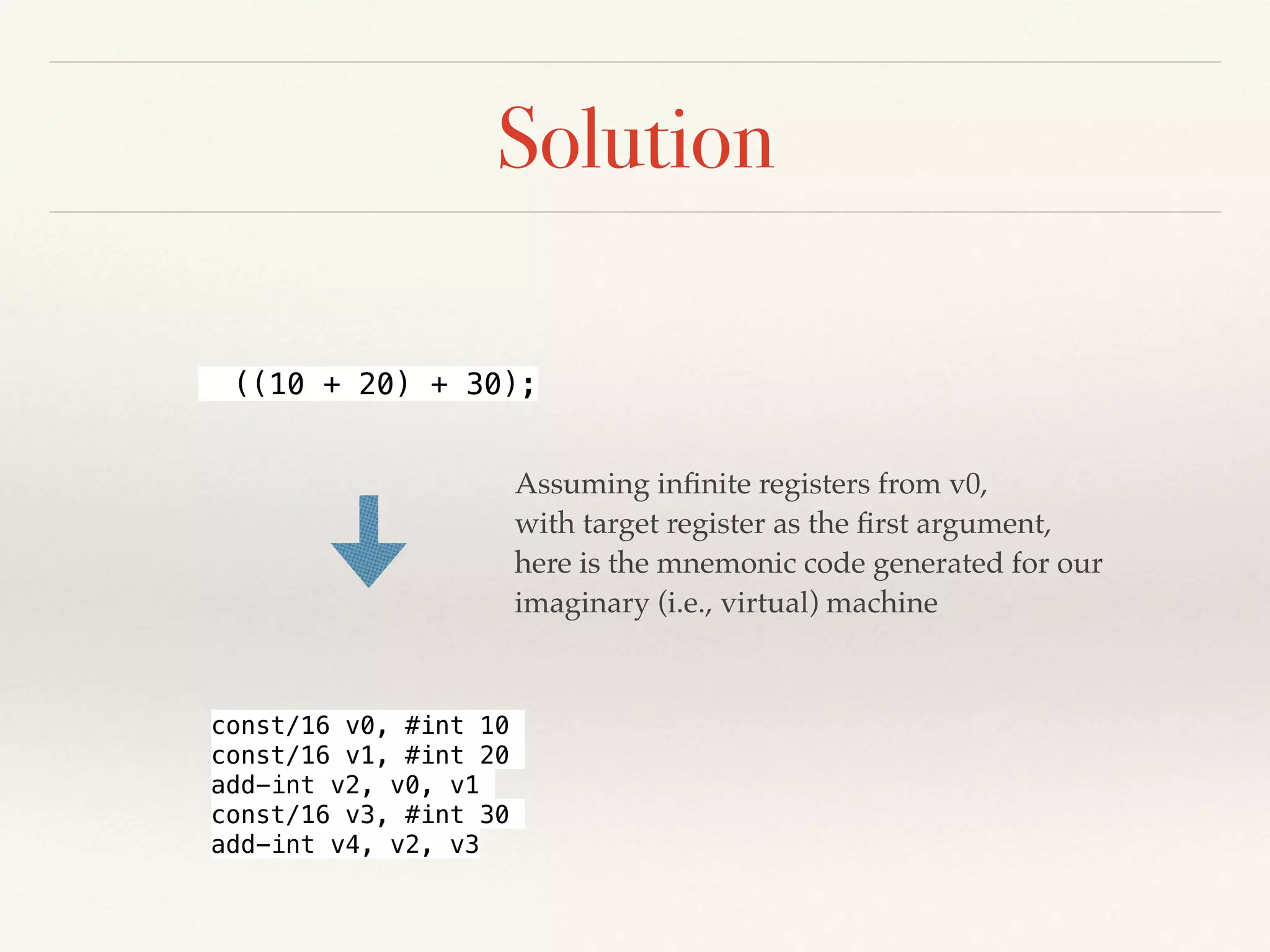
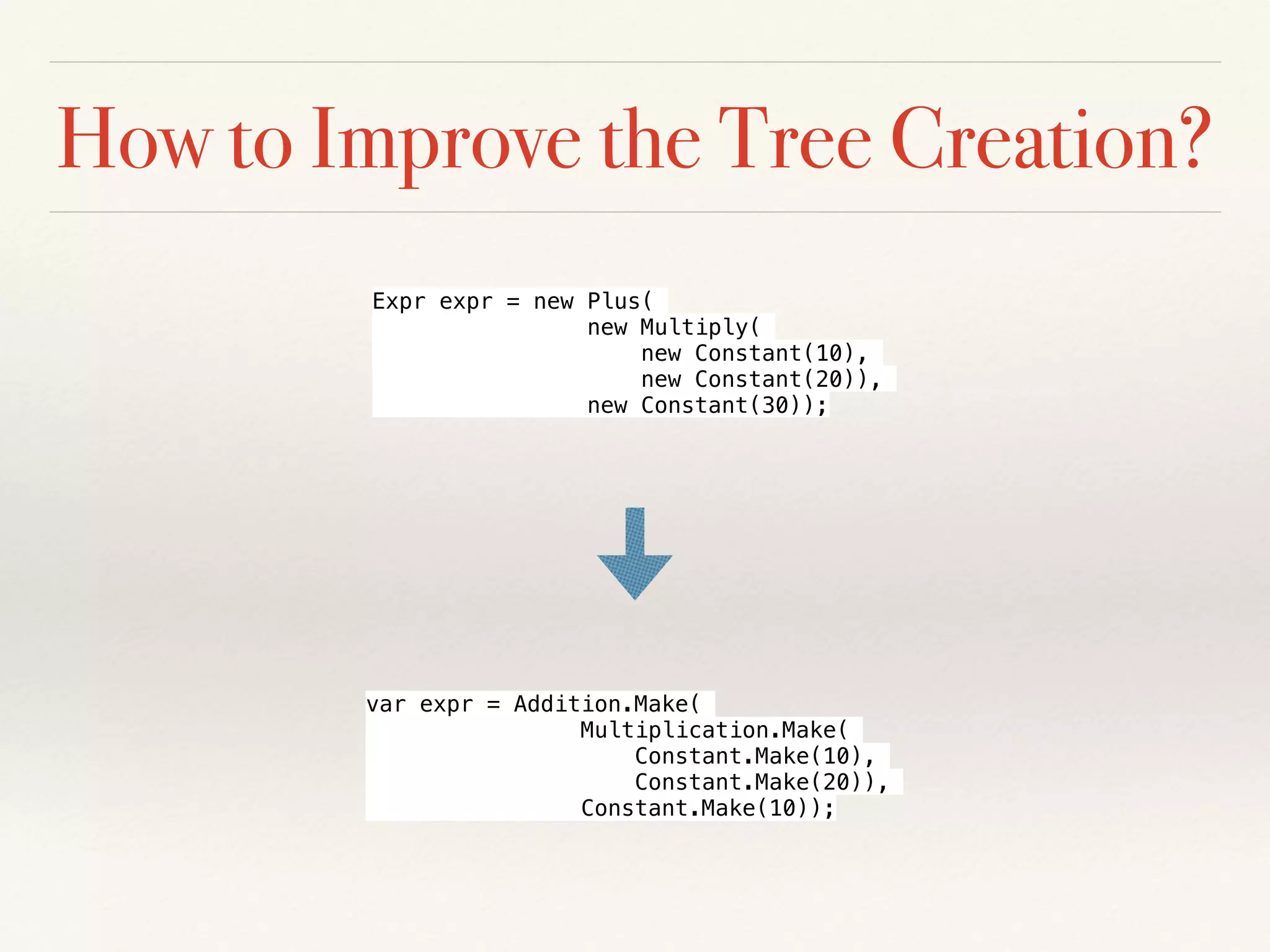
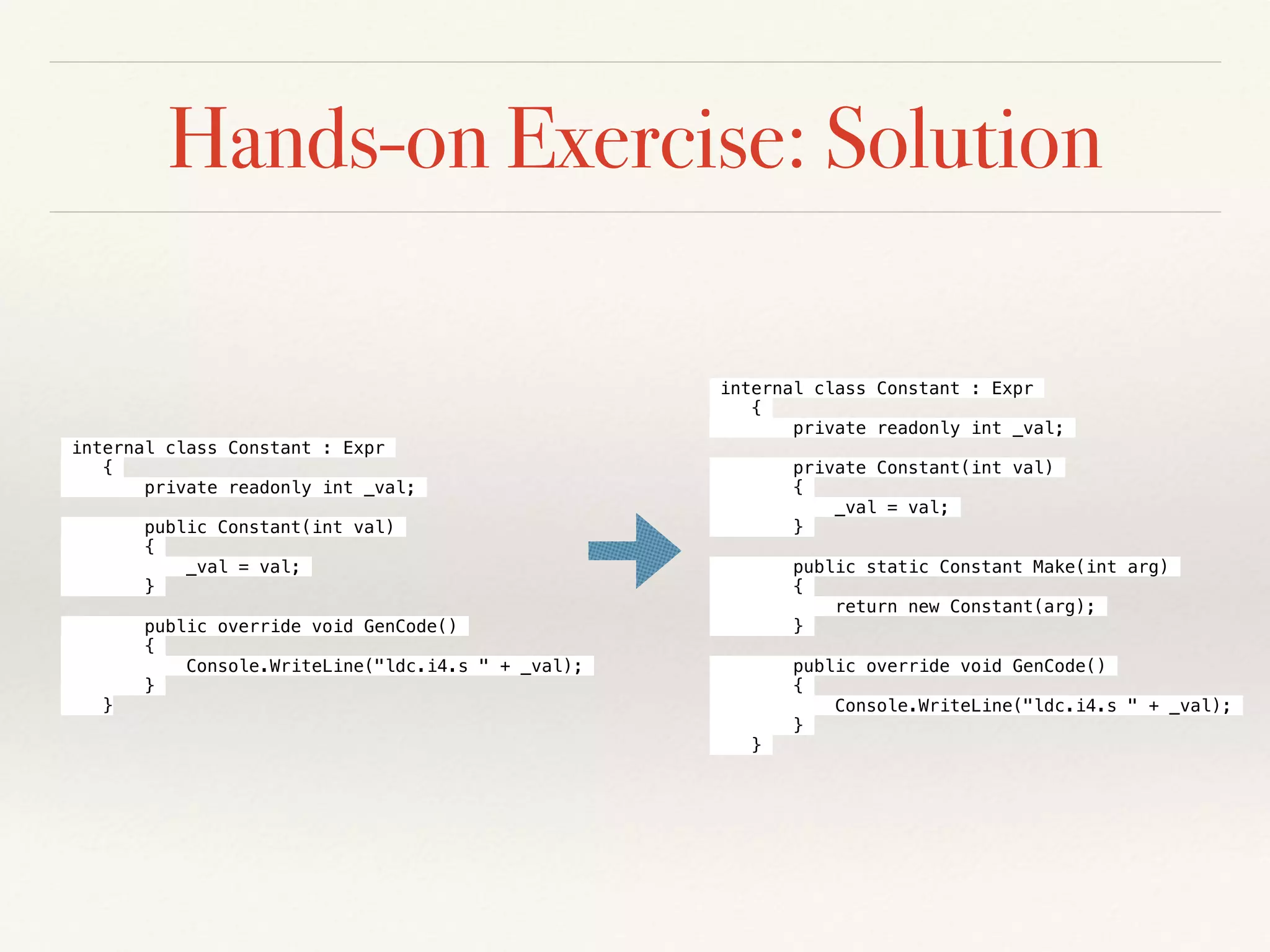
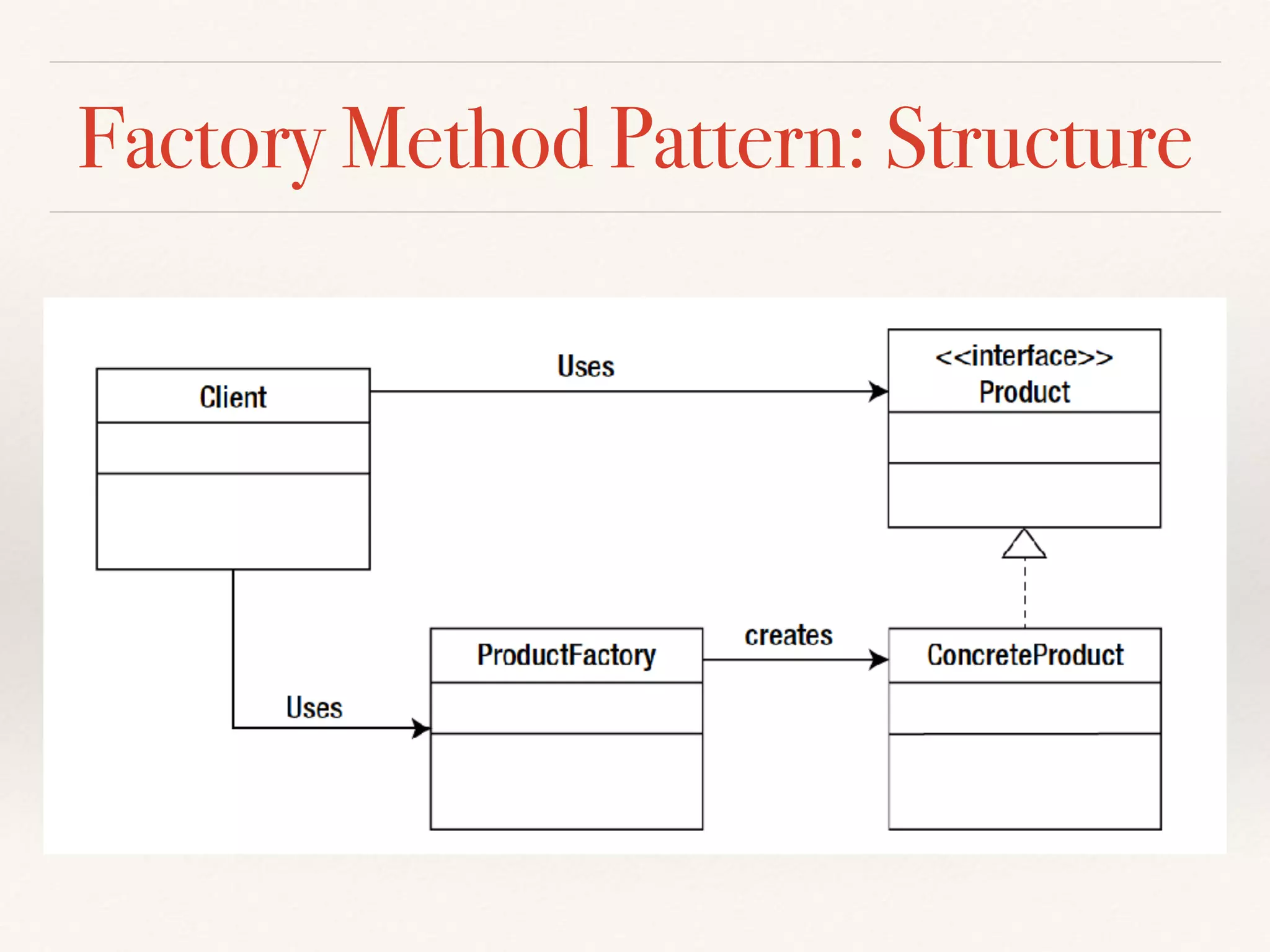
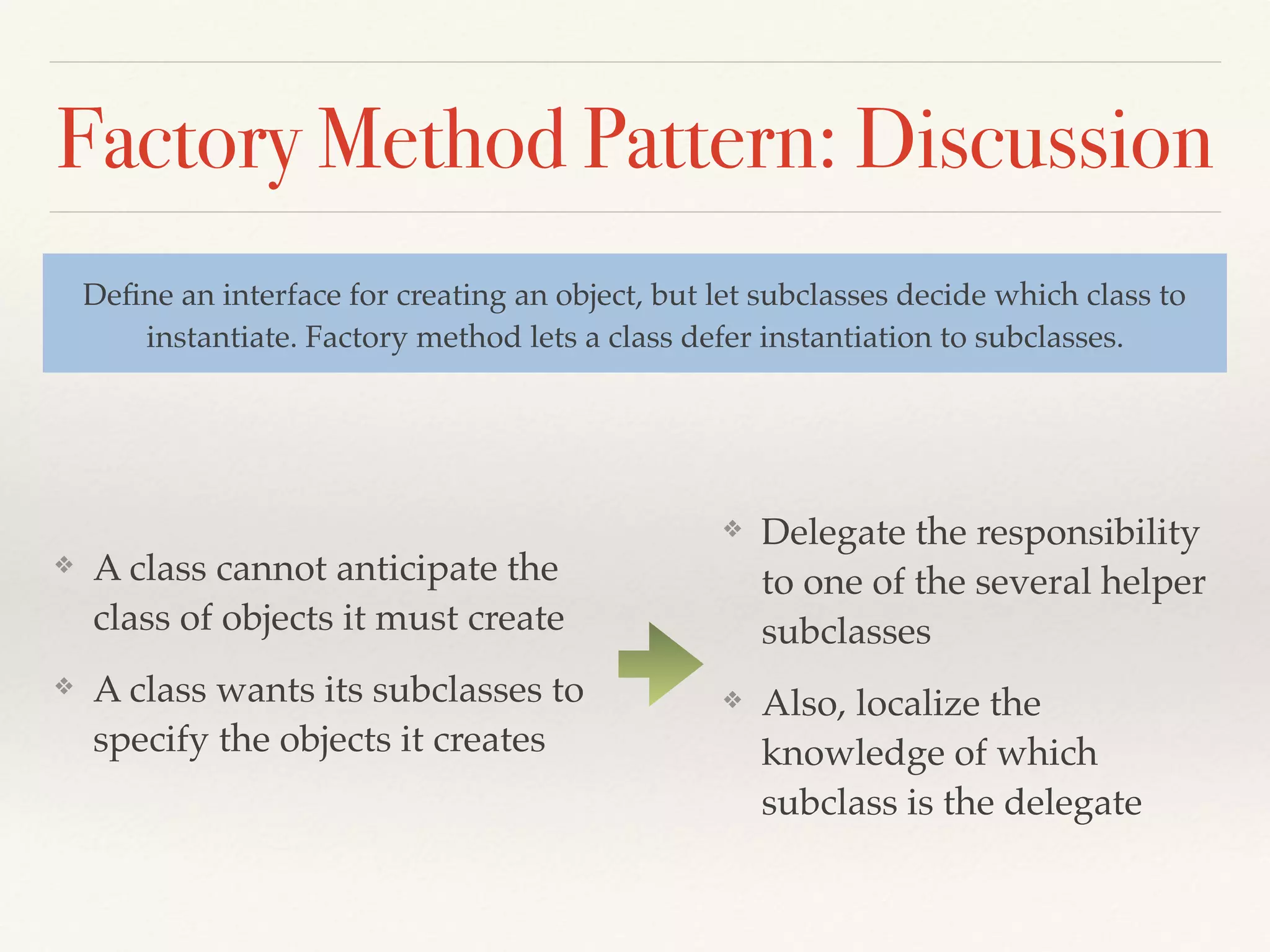
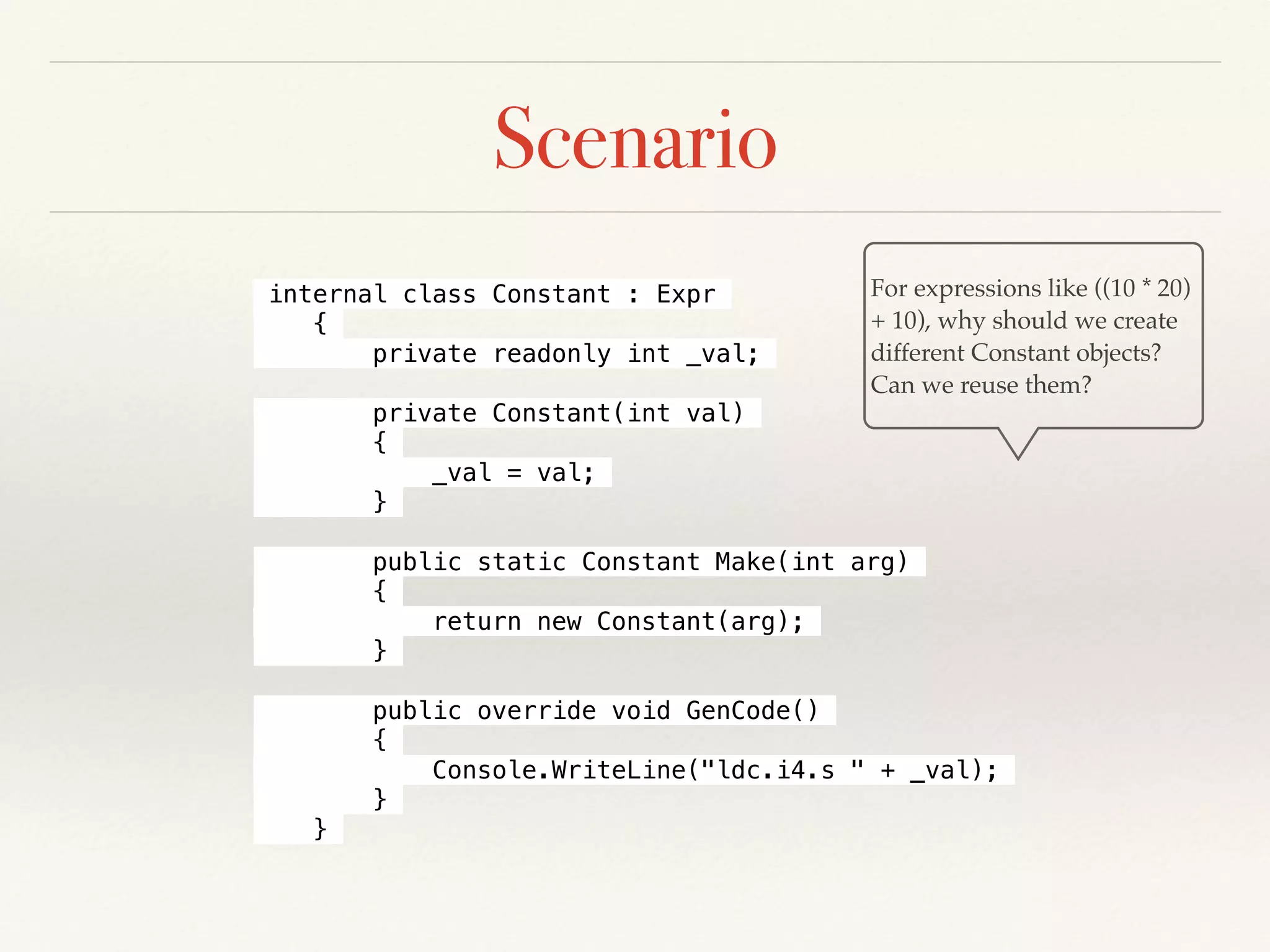
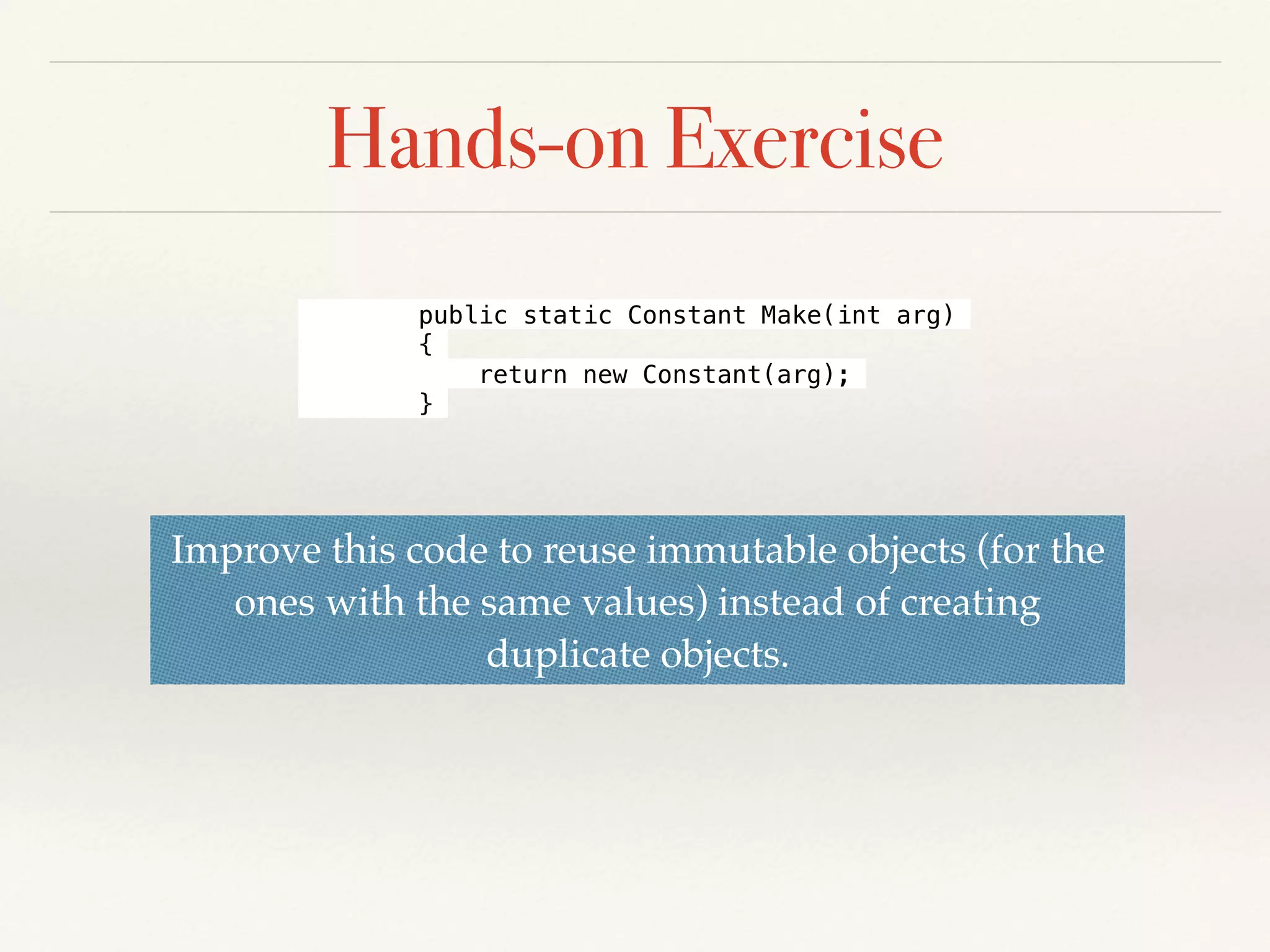
![Hands-on Exercise: Solution
internal class Constant : Expr
{
private static readonly
Dictionary<int, Constant> Pool = new Dictionary<int, Constant>();
private readonly int _val;
private Constant(int val)
{
_val = val;
}
public static Constant Make(int arg)
{
if (!Pool.ContainsKey(arg)) Pool[arg] = new Constant(arg);
return Pool[arg];
}
public override void GenCode()
{
Console.WriteLine("ldc.i4.s " + _val);
}
}](https://image.slidesharecdn.com/interpretercasestudy-designpatterns-170604050055/75/Interpreter-Case-Study-Design-Patterns-34-2048.jpg)
